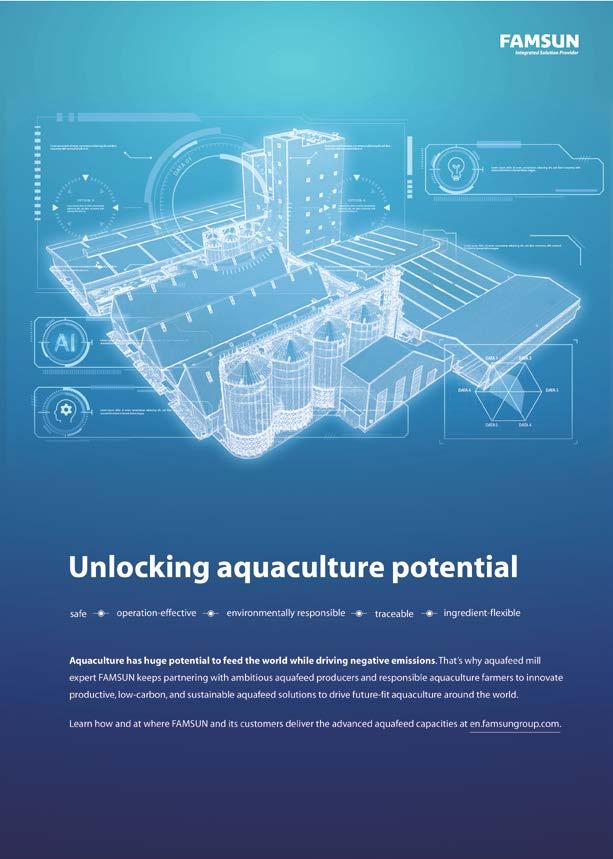
GREEK AQUACULTURE:



Looking





Looking
a
As industry experts, we fully understand the unique challenges you face in the aquafeed industry. That’s why we are committed to assist you throughout the entire journey, from concept to complete installation. We are fully equipped to bring your vision to life!
Events have never been more important than they are today in driving our industry forward.
It’s June and I’ve just returned from Puerto Vallarta, Mexico, where we were invited to attend the International Society of Feed Nutrition and Feeding (ISFNF) 2024 biannual meeting, which took place in the last week of May.
And what a week that was! Intensive, invigorating and insightful.

It was a full week of conference sessions starting with a workshop organised by Dr Brett Glencross of the IFFO, who is also the ISFNF’s immediate-past chair of its international scientific committee - and also our columnist in International Aquafeed.
That workshop took place on Monday and Dr Glencross will be reporting on its outcome in our July edition. Needless to say, communications and how our sector should tackle using modern day digital means to get our messages across to future consumers was a point of discussion.
The rest of the week was devoted to the ISFNF’s scientific program which had a focus on presentations from Latin America. Puerto Vallarta after all is a major resort location for visitors from both North and South America attracted to its old town, fabulous isolation, long summers and friendly people.
For Europeans and Asians reaching Puerto Vallarta was a longer challenge and transiting through the USA is never easy nor stress free. However, there was a good turnout of members from these regions although the normal attendance from China was missing.
Our report on the conference itself will also follow in next month’s edition, but for now it’s timely to thank local organisers Dr Mayra L. González-Félix and Dr Martin Perez-Velazquez, both of the University of Sonora, Mexico, for their superb organisation and running of the event in the city’s new Congress Centre.
Over four days the 340 delegates heard 65 presentations and viewed 200-plus posters.
I can’t help believing that our industry is in good shape with this intensive focus on fish nutrition and fish feeding from this extensive pool of scientists and specialists.
Of course, there is the World Aquaculture Society also addressing nutrition and feeding and these two combined is helping to ensure fish, this valuable food source, can meet rising demand while taking pressure off the harvesting of wild caught fish and associated over exploitation.
A related topic - our Directory
June is the month in which we compile the contents of the annual International Aquafeed Directory and Buyers Guide. The 2024-25 edition will be expanded to include companies providing equipment to farmers.
The directory - now called the International Aquafeed Directory and Buyers’ Guide including Fish Farming Technology - will be available on our website from mid-July and mailed to our readership with the August edition.
There is still time for suppliers to register their companies and choose their product heading (free of charge) in the Product Guide as well as an opportunity to place a classified advert, or a logo and/or synopsis in the company A-to-Z listing section or alternatively to place a display advertisement in the book itself.
Please be sure to use the QR Code below to access the registration form and to see more details about how to expand your presence.
Professor Simon Davies has been with our International Aquafeed magazine for over 16 years and is now stepping down from the position of Nutrition Editor to pursue other avenues of animal nutrition and science, particularly in the livestock sector.
He has brought to our readership a wealth of information and understanding, which I’m sure has influenced the way aquafeeds are formulated and used today. He has covered a complete range of nutritional topics, from insights into ingredients and feed additives to disease and health management through diet and references to the complete range of fish species we farm. He has also contributed features to the magazine.
It has been a privilege and a pleasure to work with him and to provide the platform from which he has been able to express his views and to inform.
We could not have asked for a better, more dedicated editor to guide us over this long period of development for the magazine. In his time with us, we have gone from a bi-monthly, compact publication to a multilingual, monthly magazine with the development of a Fish Farming Technology section that has now become a publication in its own right (although still published within the covers of International Aquafeed magazine).
Most recently, Dr Davies has been instrumental in assisting us in establishing a Journal for the aquafeed industry and for the fish farming technology sector within aquaculture.
We will always welcome contribution from Dr Davies in the future as I’m sure he will remain a regular reader.
As with many other topics he covered we will be continually addressing them. One in particular I would like to pursue is the possibility that vitamins and minerals might play an even greater role in fish health than being seen from an ingredient that helps fish to express their growth potential perspective. That was a topic raised on the last day of the ISFNF Conference I mentioned above.
We wish Professor Davies all the best in his future endeavours and thank him for his contributions over the past years.

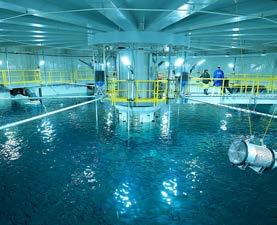
Perendale Publishers Ltd
7 St George’s Terrace
St James’ Square, Cheltenham, Glos, GL50 3PT, United Kingdom
Tel: +44 1242 267700
Publisher Roger Gilbert rogerg@perendale.co.uk
Managing Editor Joy (Jyothsna) Nelloolichalil joyn@perendale.co.uk
International Editors
Dr Kangsen Mai (Chinese edition) mai@perendale.com
Prof Antonio Garza (Spanish edition) antoniog@perendale.com
Erik Hempel (Norwegian edition) erikh@perendale.com
Editorial Board Chairman
- Dr Daniel Merrifield
Editorial Advisory Panel
- Dr Abdel- Fattah M. ElSayed
- Dr Alessio Bonaldo
- Dr Allen Wu
- Prof Charles Bai
- Dr Domique Bureau
- Dr Elisabete Matos
- Dr Eric De-Muylder
- Dr Noor Khan
- Dr Pedro Encarnacao
- Dr Philip Lyons
- Prof Dinesh Kaippilly
Editorial team
Shannon Parsons shannonp@perendale.co.uk
Niamh Cassidy niamhc@perendale.co.uk
International Marketing Team
Darren Parris Tel: +44 7854 436407 darrenp@perendale.co.uk
Costa Skotidas +44 7826 545952 costas@perendale.co.uk
Latin America Marketing Team
Cristina María Roldán Otero
Tel: +44 1242 267700 cristinaperendale@gmail.com
Egyptian Marketing Team
Mohamed Baromh
Tel: +20 100 358 3839 mohamedb@perendale.com
India Marketing Team
Geeji Madathil +91 7994903650 gigigigs@gmail.com|
Asia Marketing Team
Dante Feng
Tel: +886 0227930286 dantef@perendale.com
Nigeria Marketing Team
Nathan Nwosu
Tel: +234 8132 478092 nathann@perendale.com
Digital community manager
David Harvey davidh@perendale.co.uk
Design Manager
James Taylor jamest@perendale.co.uk
Circulation & Events Manager
Tuti Tan
Tel: +44 1242 267706 tutit@perendale.co.uk
Development Manager
Antoine Tanguy antoinet@perendale.co.uk
Aquafeed Journal journal@perendale.co.uk

1 International Aquafeed - Volume 27 - Issue 6 - June 2024
9 HiProMine increase protein production to support sustainable aquaculture
11 Positive outlook for global fishmeal and fish oil production
11 Scottish salmon with label rouge approved for insect-based feed
14 Digestive enhancers: Reduce shrimp feed cost and optimize profitability
16 Feed solution to compensate fish meal reduction in Aquafeeds
22 Nettle in Aquaculture Feeds: The Terrestrial Green Power Plant for better Fish Health
28 Sustainable fish Nutrition: Harnessing the Power of Seaweed

The International Aquafeed Directory Buyers’ Guide including Fish Farming Technology was launched in 1997 as an easy-to-use directory for manufacturers of fish feed and for fish farmers to source suppliers.
As a practical guide for aquafeed mill equipment, fish farming equipment and feed materials available throughout the world, the International Aquafeed Directory and Buyers’ Guide continues to maintain its unique position.
Today this is the world’s most comprehensive directory for:
Ingredients, raw material feedstuffs, feed additive directory specifically designed to identify all micro-ingredients.
Fish farming equipment and technology including feeding systems, cages, nets, barges and RAS systems
Aquafeed milling equipment and plant for the production of all feeds including for example extrusion, hammer mills, mixers and equipment used in complete turnkey projects


HiProMine has opened another European plant, specialising in the production of insect protein and fat, which is becoming increasingly desirable in the aquaculture industry. Many aquafeed producers recognise not only the health benefits of insect-derived products, but also the ecological and economic aspects.
“When it comes to healthy and sustainable nutrition of farmed fish insects are the future” explains Maciej Szumiński. “Aquaculture production has become a key sector in food production, providing high-quality protein for an increasing human population. However, as production increases, challenges arise in ensuring sustainable and efficient production. In recent years, interest in insect-derived products as a valuable raw material in aquaculture nutrition and as a tool for aquatic environment protection has been growing significantly” he adds.
Due to their high protein content and efficient feed utilisation, insects are a promising and ecological source of nutrients for aquaculture. Larvae of insect species, such as Hermetia Illucens, can transform agricultural by-products into high-value protein, which makes them ecologically and economically attractive.
The Polish company HiProMine SA has just launched a large plan in Karkoszów (Lubuskie Voivodeship), located only 100km from Berlin. The year capacity of livestock is estimated for 25,000 tonnes and the same amount of organic fertiliser. It is the largest plant in Central Europe, with proprietary technology for insects breeding and rearing, employing many scientists conducting numerous research on the properties of protein in the nutrition of various animal species.
“Insect protein, which in the natural environment is a basic component of fish diets, is characterised by optimal amino acids profile” reveals Dr Monika Dudek. “Moreover, ingredients with functional properties contained in insect-derived products play an important role in improving the fish health” she adds. How is insect protein digestibility in fish?
“When insect-derived products are used in salmonid diets, both high digestion of crude protein and crude fat can be noted. In other words, nutrients in insect raw materials are characterised by high availability for
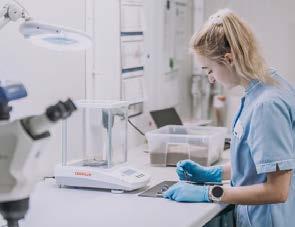
gastrointestinal tract, especially in case of carnivorous fish. Additionally, favourable rearing results are noted and improvement in intestinal microbiota composition, which is crucial for fish health” explains Dr Zuzanna Mikołajczak, fish nutrition specialist in HiProMine.
The usage of insect protein as a dietary component in fish nutrition can bring a number of benefits, such as increase of feed efficiency, improve of fish growth and reduce of mortality.
“Our production is ecological, minimises the carbon footprint and fits into the ideas of broadly understood care for environmental protection and sustainable developement” says Maciej Szumiński. “Building a plant where we will produce insect protein and fat was enormous challenge. However, we believe that our scientific achievements, translated on a large scale, will bring tangible results both for the environment and aquaculture development.”
Maciej Szumiński emphasises that fish production requires the usage of huge mounts of feed. One of the raw materials used in fish nutrition are fishmeal and fish oil, partly produced from unsustainable fishery. Overfishing of oceans to produce aqua raw materials lead to overuse of raw natural resources.
The usage of insect-derived products can reduce these negative effects by lower inclusion of conventional raw materials in feed, which brings sustainability benefits and decrease negative impact of aquaculture on natural aquatic environments. This trend has therefore become a topic of interest due to its high nutritional value and ecological features.


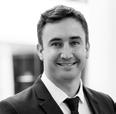
ecruiting for the aquaculture industry presents a distinctive array of challenges, rooted in the specialised nature of the field and its varied demands, which can extend to specific species or production methodologies. At its core, this industry requires individuals with a robust foundation spanning biology, marine science, feed management, operational expertise, and potentially engineering, setting a high bar for recruitment. This necessitates innovative approaches or a deep understanding of the industry to attract suitable candidates.
Interdisciplinary skills are pivotal in aquaculture, as professionals must navigate diverse domains to address multifaceted challenges. Identifying candidates who not only excel in their respective fields but also possess strong collaborative abilities crucial for supporting business success is a key focus in our candidate selection process.
The dynamic nature of aquaculture underscores the importance of industry-specific experience, particularly in niche areas like recirculating aquaculture systems (RAS). However, sourcing individuals with diverse exposure and expertise across production and engineering, especially for senior roles, remains a significant challenge, highlighting the necessity for targeted talent acquisition strategies.
Geographic dispersion adds another layer of complexity, with remote locations often deterring potential candidates due to logistical constraints or lifestyle preferences.
Overcoming this hurdle requires innovative incentives and a comprehensive assessment of candidates’ willingness to relocate, emphasising alignment with the company’s vision.
With sustainability becoming increasingly central, recruiters must identify candidates who not only excel in traditional aquaculture practices but also advocate for environmentally responsible approaches. Moreover, as technology continues to integrate into the sector, recruiters seek individuals who embrace innovation and demonstrate adaptability.
To overcome these challenges, recruiters must adopt innovative strategies such as leveraging social media, utilising existing networks and referrals, employing targeted approaches, and collaborating with educational institutions or regional governing bodies to cultivate specialized training programs. Offering competitive compensation packages and fostering a culture of continuous learning are also crucial for talent retention and meeting the evolving needs of the aquaculture industry.
In essence, recruiting for the aquaculture industry demands a multifaceted approach to be successful in delivering on the brief.
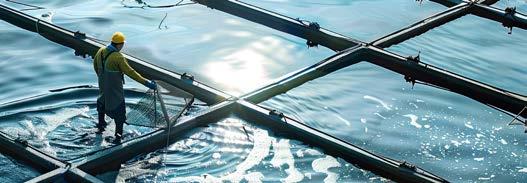
THE
POSITIONS RECRUITED: RECRUITING GLOBALLY



Based on its membership, which accounts for 55 percent of global marine ingredients production, IFFO reports on the main trends observed from January to March 2024 in a selection of countries.
In Peru’s North-Centre, almost 50 percent of the 2.475 million mt anchovy quota has been caught during the first 23 days of the 2024 first fishing season. Peru’s quota setting is of critical importance considering that the country accounts for 20 percent of global fishmeal and fish oil production in an average year.
When we look at the first three months of 2024, global fishmeal production dropped by approximately 27 percent compared to the same period in 2023. Such a decrease is driven by the early onset of the second fishing season in Peru’s North-Central region back in 2023, along with a lower-than-average granted quota, resulting in a diminished catch at the tail of the fishing season at the beginning of 2024. Chile, the USA and the African countries have been showing a positive trend in fishmeal production compared to 2023.
As for fish oil, globally, cumulative output through March 2024 was 30 percent down year over year, mostly due, here again, to the timing of the Peruvian fishing season last year. In 2024 so far, the USA and the African countries are the only ones that have registered a positive trend compared to January-March 2023.
The aquaculture industry is struggling to reduce stocks given the current tepid demand among consumers. Initial estimates indicate that aquafeed production in the first quarter of this year is expected to be lower compared to the same period last year, reflecting a subdued trend in feed ingredients consumption.
Thanks to cooperation between value chain partners in the Scottish aquaculture industry, salmon sold with the prestigious ‘Label Rouge’ (Red Label) can now be fed diets containing insect-derived ingredients during the juvenile stages. Label Rouge production represents 12 percent (8900T) of Scotland’s salmon exports, a significant and growing segment of the industry. It is thus the ideal breeding ground to support premium responsibly sourced ingredients.
The highly-regarded endorsement was achieved in an initiative that brought together INAO, the French Label Rouge regulatory authority; Landcatch, the Hendrix Genetics’ genetics brand for salmon breeding; Scottish Quality Salmon which acts as the management organisation (ODG) for Scotland’s salmon producers and companies; and the leading company in insect ingredients worldwide, Protix.
The internationally recognised Label Rouge requires compliance with stringent standards to ensure the best quality product for consumers. This includes specifications for feed that limit the types and amounts of ingredients that farmers can use across the lifecycle of the salmon. In a recently approved update to these specifications, insects can now be included in the diets of juvenile (freshwater) salmon – marking a significant shift for the Scottish industry is also increasingly putting larger smolt to sea.







Questioning what the ‘S-word’ really means...
The word “sustainability” gets thrown around a lot these days. So much in fact that everyone is adopting its use in some format or other.
However, like that famous line from the movie The Incredibles, “when everyone is special, no one is…”, it makes you question if everyone is as sustainable as they claim. So, if everyone is (supposedly) adopting sustainable practices now, how do we tell truth from the greenwashing? The issue is becoming so pervasive that the European Commission is now introducing legislation (Green Claims Directive 2023/0085) to ensure that there is substantiation on the communication of environmental claims going forward.
Much of the problem in this regard comes from the basis by which different sectors claim something is sustainable. Many
would have you believe just because something comes from a plant product that this makes it sustainable. Afterall this is much of the claim of the vegan-lobby, in that we should all eat plants and save the world. However, a quick review of some of the literature on the impacts on biodiversity, climate-change potential, water use and so on quickly shows that agriculture has a huge impact. And this is even before we add in the impacts of land clearing and pesticides. Clearly crop production is not without its baggage.
An alternative that many pundits opt for now as a sustainable alternative is insects. While insects sit nice and low in the trophic-system-of-things, they still need to be fed. They are animals after all and still need organic carbon and nitrogen to grow. So, recently I was chasing some life cycle assessment (LCA) data on insects to get some clarity on the topic and came across a good paper on a commercial Dutch insect production system [https://doi.org/10.1016/j.resconrec.2019.01.042] and the environmental impacts of insect meals. I was surprised when I read that it took 32.24kg of feed (spent brewery grains) to produce 6.26kg of outputs of which only 1kg was insect meal. I was even more surprised to read that the carbon footprint (global warming potential) that they reported in that paper was 5300kg CO2-equivalent per tonne of insect meal. Compare that against Peruvian anchoveta meal at 624kg CO2-equivalent per tonne and Brazilian solvent-extracted soybean meal at 4257kg CO2equivalent per tonne [EF3.1 economic allocation GFLI v2.0 database], and it makes you question things, like what it really means when you say something is sustainable.
ready for substantial reduction in batch time ?

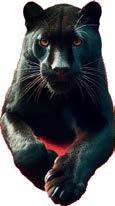

The current trends in aquafeed formulation force the nutritionist to optimise nutritional inputs and ingredient selection as affordably as possible.
Cholesterol is an essential nutrient for shrimp. It is a key compound of membranes and a precursor for the synthesis of ecdysteroid molting hormones. Reducing fish meal (FM) and fish oil (FO) in shrimp feeds will directly affect the level and availability of cholesterol. Practical shrimp diets are usually formulated with cholesterol levels starting from 0.07 – 0.1 percent. Lower levels than 0.07 percent are considered as non-sufficient. Purified cholesterol can also be added to reach a targeted level. These sources are, however, becoming very expensive so requiring more costeffective alternative options.
In times of high FM and FO prices or low shrimp prices, it is important for nutritionists to search for strategies to fulfil the cholesterol requirement and reduce the cost of shrimp feeds. One of the solutions is Lipogest®, a digestibility and metabolic enhancer based on bile salts. Bile salts constitute an alternative source for the steroid ring and therefore can maintain the synthesis of molting hormones in situations where cholesterol levels are deficient in the diet (Lin et al. 2017). Furthermore, bile salts improve the digestive capacity for lipids in the digestive system of shrimp by improving lipid emulsification and micelle formation, resulting in a faster absorption of lipids in the hepatopancreas.
A feeding trial with white shrimp (Litopenaeus vannamei) demonstrated effective replacement of fish oil and purified cholesterol with Lipogest®. A positive control feed (CHOL8) was formulated to reach an optimal cholesterol level of 0.08 percent. A negative control feed (CHOL6) was formulated at a cholesterol level of 0.06 percent by lowering the fish oil and by omitting the purified cholesterol compared to the positive control diet. To this diet, 0.125 percent bile salt-based Lipogest® was added and compared to CHOL8 in an 8-weeks feeding trial.
Reducing the level of cholesterol significantly affected growth
and feed conversion in white shrimp (Table 1). However, the addition of Lipogest® improved the growth compared to the negative control and restored the performance of the shrimp to the same level as that of the feed with higher cholesterol level. FCR of the Lipogest® treatment was similar to that of the feed with higher cholesterol level. Such improvements can be attributed to a more optimal digestion efficiency and regulation of cholesterol metabolism. In this line, Lin et al. (2017) demonstrated the significant effects of adding bile salts in cholesterol deficient soybean meal-based diets for white shrimp. Furthermore, this study showed that several ecdysteroid signaling response genes, such as the expression of ecdysteroid receptor, chitin synthetase and muscle growth markers were improved by adding bile salts in cholesterol deficient diets. In a more recent trial, the supplementation of bile acids at 0.025-0.1 percent in 14 percent FM shrimp feeds reduced the FCR and increased weight gain (Wang et al. 2023). Altogether, these results show that bile salt supplementation can mitigate the adverse effects of cholesterol deficiency caused by low FM inclusion.
Another approach to cope with higher prices raw material is the application of lyso-phospholipids. Aqualyso isa highly concentrated lyso-phospholipid (LPL) based digestibility enhancer developed for application in fish and shrimp. It delivers emulsifying properties that optimize lipase activity
Table 1: Effect of LIPOGEST® on the performance of white shrimp L. vannamei fed a diet containing a low level of cholesterol. Different letters show significant differences (p<0.05) . CHOL8: positive control with cholesterol level of 0.08%, CHOL6: negative control with cholesterol level of 0.06%; LIPOGEST: 1.25 kg/MT added to the CHOL6 feed.
Figure 1: Effects of dietary lyso-phospholipid based digestive enhancer (AQUALYSO®, AQL) on feed intake (A), weight gain (B) and specific growth rate (C) of white shrimp fed diets with high fishmeal/fish oil (HIGH FM/FO) or low fishmeal/fish oil (LOW FM/FO). Bars with different letters indicate significant differences (p<0.05).
and improves transport and processing of lipidic nutrients in shrimp hepatopancreas. Such metabolic optimization is also key in supporting the reduction of fishmeal, fish oil and lecithin in aquafeeds.
A growth trial was conducted to investigate the benefits of LPL-based Aqualyso in shrimp feed formulated with reduced proportions of fish meal and fish oil. Four isoproteic and isolipidic experimental feeds were formulated Two control feeds containing one percent lecithin were designed: high fish meal/ fish oil diet (HIGH FM/FO: 20%FM, 3%FO) and low fish meal/ fish oil diet (LOW FM/FO: 7%FM, 1%FO). LPL-based Aqualyso (AQL) was supplemented at 0.1 percent into both formulations: HIGH FM/FO +0.1% AQL and LOW FM/FO +0.1% AQL.
Supplementation of the lyso-phospholipid-based Aqualyso supported feed intake and growth performance of shrimp fed high as well as low levels of cholesterol in the feed (Figure 1). Feed intake significantly improved by 13 and 21 percent with supplementation in the high and low fishmeal/fish oil feeds, respectively. The best growth effects were found in the high fishmeal/fish oil feed supplemented with the additive, showing significant improvements of 16 percent and 11 percent in weight gain and specific growth rate (SGR), respectively. A similar pattern was observed in the low fishmeal/fish oil feed; with supplementation the numerical improvements were 10 percent and 8 percent in weight gain and SGR, respectively. More interestingly, supplementation in the low fishmeal/fish oil feed matched the performance of the high fishmeal/fish oil feed, proving the efficacy of Aqualyso to reduce formulation cost while maintaining the performance of a high quality feed. Additive supplementation did not significantly affect feed conversion efficiencies of the diets containing high and low fishmeal/fish oil levels.
In conclusion, within the current context of high prices of ingredients and low shrimp prices, aquafeed formulators can count on Lipogest® and Aqualyso® to make aquafeeds perform with less marine ingredients and cholesterol and therefore achieve significant cost-reductions without losing the performance.
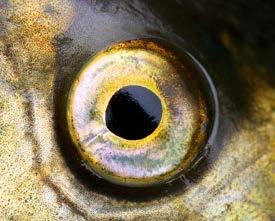
CeFi ® pro Autolyzed brewers’ yeast
| Rich in nutrients and active ingredients
| High bioavailability of the same
| Stimulates the metabolism
| Promotes feed intake and performance Visit our website: leibergmbh.de

Aquaculture production has undergone remarkable growth during the past few decades, and it will continue to rise in the coming years to meet higher demand for safe, healthy and convenient seafood products.
For economic, ecological and societal reasons, a lower usage of finite marine-harvested resources has been a major trend in the aquafeed industry. Grain and oilseed by-products are promising sources of protein and energy for aquaculture feeds.
However, high dietary inclusion levels of plant proteins have often been associated to detrimental effects on growth, feed efficiency, intestinal dysbiosis and immune response, threatening the profitability of major aquaculture species like Gilthead Seabream (Sparus aurata).
Food manufacturers are looking for sustainable natural solutions that would compensate for these deficiencies and the associated stress and therefore at least maintain performance compared to an optimal feed.
Raw materials and feed additives with specific functional properties are increasingly important to support the industry in many of these challenges. Functional feed additives that enhance digestive and metabolic processes have shown to be crucial to make these new feed formulation scenarios work, while reduce the environmental impact of aquaculture and promoting fish welfare.
Among these alternatives, plants extracts have shown interesting benefits like growth performance improvement, feed efficiency optimisation and host resistance. One of them, based on a specific combination of plants extracts has been developed by Mixscience (France). The aim of this study is to examine the impact of this new solution on the zootechnical performance,
nutrient digestibility, intestinal mucosal health and stress resilience in gilthead seabream (Sparus aurata) challenged by a nutritional stress and some additional environmental stress.
The experimental solution (EXP) was supplied in a ready to use powder form. It was incorporated in the mash, prior to extrusion. The trial comprised 3 dietary treatments [Table 1]. A positive control diet (PC) mimicking a practical diet for the targeted species, with 44 percent crude protein, 17 percent crude fat levels and 21 MJ/kg gross energy in order to cover all known nutritional requirements. A negative control diet (NC) with similar levels of crude protein (44%), crude fat (17%) and gross energy (21 MJ/ kg) to the PC diet, but slightly lower levels of digestible protein (-0.3%) and digestible energy (-0.4 MJ/kg). This reduction on digestible protein an energy levels is achieved by replacing fishmeal (Super Prime quality) by an equivalent protein supply derived from defatted soybean meal (Soybean meal 44) and sunflower meal, which tend to lower digestibility and negatively affect intestinal integrity. All other nutrients like essential amino acids (e.g., lysine, methionine), phosphorous and EPA+DHA are balanced among the diets. One additional diet, based on the NC
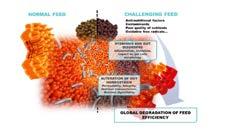

formula was supplemented with test product at 200 g/ton (EXP). Test product was added in the mash prior to extrusion at the expenses of wheat.
Diets were isonitrogenous (44% crude protein), isolipidic (17% crude fat) and isoenergetic (21 MJ/kg gross energy) as illustrated in Table 2.




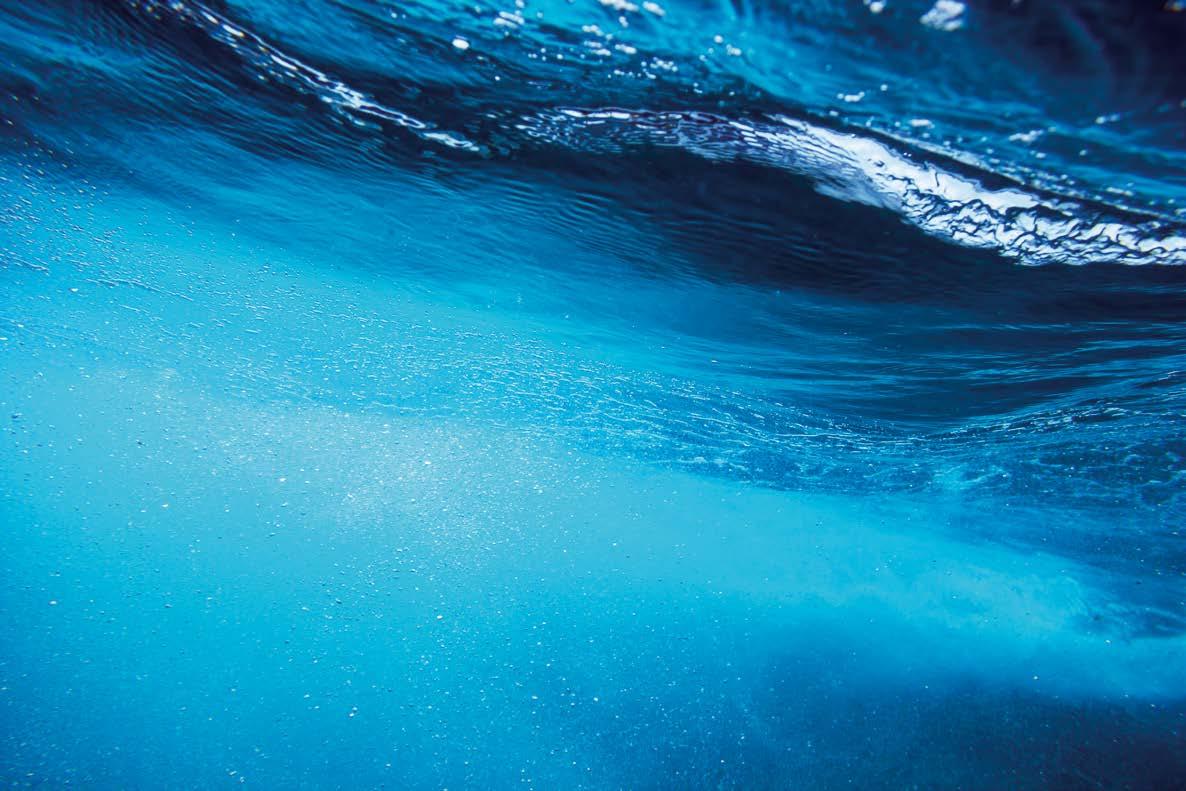
Figure 2: Results of the relative overall activity of EXP solution (in blue) on immune response, oxidative stress, intestinal and epithelial homeostasis and apparent nutrient digestibility compared to the negative control (NC in black) and the positive control (PC in green)
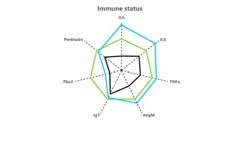
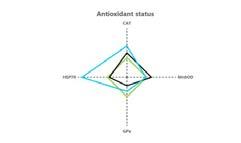
Feed conversion ratio (FCR) and growth performance (Body weight) after 62 days of feeding (normal conditions) and after 12 days of additional environmental stress (74 days) EXP solution (in blue), Negative Control (NC in black) and Positive Control (PC in green) [0-62 days] = Nutritional stress; [62-74 days] = 12 days of nutritional stress and environmental stress
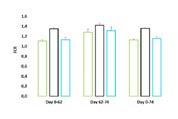
Diets were manufactured by extrusion). Diets were manufactured by extrusion. All powder ingredients, including the tested solution [EXP], were mixed accordingly to target formulations in a double-helix mixer and ground (below 400 µm) in a micropulverizer hammer mill. Diets were manufactured by means of a pilot-scale twin-screw extruder with a screw diameter of 55.5 mm and temperature ranging from 117 to 120ºC. Feeds were dried in a vibrating fluid bed dry.
The trial was conducted in indoor facilities in Portugal. The experimental species under testing was gilthead seabream (Sparus aurata). The initial fish stock was kept for two weeks in two 1500 L tanks supplied with recirculated saltwater (temperature 20 ± 1ºC, salinity 35 ppt and dissolved oxygen >6.6 mg/L). During this period, fish were fed the PC diet, in two daily meals, at approximately 1.4 percent biomass/day. At the start of the trial, fish were manually sorted by weight to constitute homogenous
The growth assay included two distinct experimental phases

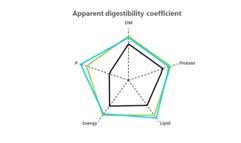

[Figure 1]. During the first 62 days (phase I), the fish were raised under normal breeding conditions to allow optimal zootechnical performance. Subsequently (phase II), the fish were subjected to stressful rearing conditions for 12 days, which involved a combination of a chronic stressor (higher rearing density and, therefore, oxygen levels dissolved lower in water) and a repeated acute stress factor (voluntary reduction in the arrival of oxygen). Apparent nutrient digestibility was measured alongside the performance test, in separate tanks equipped with faecal settling columns.
In order to evaluate the impact of the nutritional stress (phase I) and environmental stress (phase II], the Table 3 indicates the full list of monitored parameters during the study.
Zootechnical performance
The results indicate very clearly that in seabream, a challenging food (NC) in which part of the fish meal has been replaced by plant ingredients induces negative metabolic reactions: reduction in general immune status, reduction in antioxidant defences, degradation of intestinal homeostasis with in particular a deterioration of intestinal morphology (increase in the
Our wide range of value-added services and understanding of production and market challenges worldwide, allows us to find the right technology and the most cost-effective solutions for your business in Livestock, Aquaculture/ Aquafeed and Pet industries

Offers customized development, formulation and manufacturing services for efficient and effective Vitamin and Mineral Premixes, Additives, Farmac, Organic Acids, Pigments, Organic Bypass Fats, etc. with the highest quality standards and according to the needs of its customers in animal nutrition, with exclusive Technical, Professional and Personalized Consulting worldwide






histopathological score and genes induced in the cleaning of damaged caspase-type cells), a decrease in the digestibility of nutrients, compared to an optimal food (PC) [Figure 2].
This results in lower feed efficiency, in particular a deterioration of the feed conversion ratio and the protein efficiency ratio inducing an overall drop in performance which remains when environmental stress is added to nutritional stress [Table 4 and Figure 3]. Overall, intestinal homeostasis and permeability are damaged and the host expends a lot of energy to restore its basal level.
Conversely, a product such as the experimental solution EXP compensates for the side effects associated with nutritional stress by increasing the overall immune response (pro inflammation, innate immunity, sanguine antimicrobial activity), by reducing oxidative stress through overexpression of related enzymes. to the capture of free radicals and thermal protection, by preserving intestinal integrity and its homeostasis and increasing the digestibility of nutrients. This results in a restoration of feed efficiency and the final performance of the fish, which returns to levels similar to those of the positive control [Table 4 and Figure 3].
The positive effect of EXP solution has a certain persistence on the stress response of the fish because even additional environmental stress does not impact the overall performance of the fish [Figure 3].
The negative impact of a challenging food can be offset by specific plants extracts that activate key metabolic activities to save energy and maintain overall resistance that limits dysbiosis and intestinal disorders under stressful conditions and helps maintain a healthy optimal feeding efficiency and overall fitness of the host.
The present study confirms that dietary supplementation is an effective strategy to improve the zootechnical performance of gilthead sea bream and provide additional benefits related to nutrient digestibility and overall mucosal barrier functions at the intestinal level, under conditions of dietary and environmental stress.
Table 3: Monitored parameters during the study
Targeted function Specific parameters
Performance Initial mean body weight (IBW), Final mean body weight (FBW), Specific growth rate (SGR), Feed conversion ratio (FCR), Feed intake (FI), Protein efficiency ratio (PER)
Digestibility Apparent digestibility coefficients (ADC) of dietary nutrients and energy
Analysis of diets, whole-fish and faeces
Intestinal inflammatory status
Intestinal histomorphology
Dry matter, crude protein, crude lipid, gross energy, total phosphorus, Yttrium concentration in feed and faeces.
Faecal levels of calprotectin and mucins
Villus height, villus width and number of goblet cells per area of epithelium layer
Neutral and acid mucins
Immune response Expression of selected genes : Interleukin-6, Interleukin 1 beta, Interleukin 8, Tumour necrosis factor alpha, Membrane bound Immunoglobulin M, Immunoglobulin Tau, Piscidin 2, Pentraxin
Antioxidant status Expression of selected genes : Catalase, Manganese superoxide dismutase, Glutathione peroxidase, Glutathione reductase, Heat-shock protein 70
Intestinal status Expression of selected genes : Tight junction protein 1, Claudin 12, Occludin, Intestinal mucin, Intestinal Fatty acid binding protein
Epithelial homeostasis Expression of selected genes : Caspase 1, Caspace 3, Caspae 6, E-Cadherin, Tumour protein P53, Insulin like growth factor 1
Table 4: Growth performance after 62 days of feeding (normal conditions)
Values are means ± standard deviation (n=4).
Values within a row with different superscripts, denote a statistical difference (P<0.05


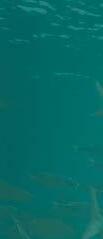
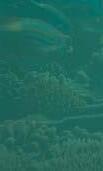
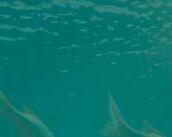


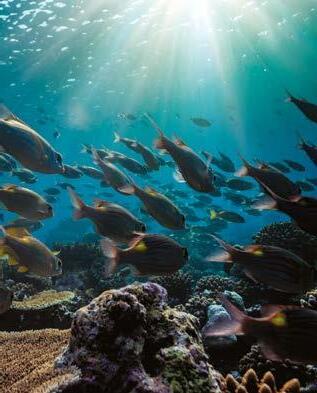

www.pce.eu







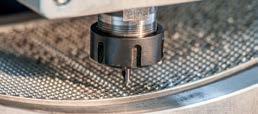
We have discussed in International Aquafeed numerous products that have been produced by companies globally that have bioactive properties and functionality as feed additives and supplements. There is no question of their value as immune modulators and antiinflammatory agents for animals such as poultry, swine and even for our companion animals in petfood applications. These natural ingredients have been widely used in fish and shrimp with enormous success revolutionising the aquaculture industry with their potential to enhance health and offer some protection from disease and stress. One of the most interesting novel terrestrial source plants for development is the humble stinging nettle Urtica dioica. Nettle belongs to family Urticaceae native to Europe, North Africa, and America. It is herbaceous perennial flowering plant with a rich array of soft green serrated leaves covered in trichomes (stinging apparatus).

Properties of nettle
Nettle has received much popular attention for human health as a medicinal but increasing wider appeal in animal feed applications. It has been advocated for fish and other aquatic production species due to these attributes that will be the focal point of this article.
Urtica has unique properties in terms of a complete nutritional profile with a spectrum of nutrients from macronutrient components to micronutrient content (Bhusal et al 2022; Devkota et al 2022) There have been numerous publications covering chemical composition and articles in the food science domain. A comprehensive review was produced by Jan et al (2016) that described nettle as a reservoir of key nutritional and bioactive components with great functional properties. Bioactive agents include phenolic compounds such as p-hydroxybenzoic acid, gentisic acid, quinic acid, rutin, quercitin. It is also a rich source of aldehydes, alkenes, amines, amides and various organic halogen compounds and aromatics.
Oxidative stress is a consequence of metabolism leading to oxidative events in animal tissues in both normal active life processes and in disease states. The antioxidant capacity of nettle


has been reported with its ability to enable the reduction of free radicals. Hydrogen peroxide scavenging and quenching of the superoxide anion have been assessed using in vitro and in vivo models with excellent validation of these beneficial effects by nettle. This is due to a combination of mechanisms including its prominent levels of ascorbic acid (Vitamin C) and other factors such as flavonoids.
Nettle also has potent antimicrobial activity due to specific phenolic classes. The phenolic compounds in aqueous extracts exhibit appreciable antimicrobial activity against specific grampositive bacteria and some yeasts. It has been shown to be quite effective against Streptococcus pneumoniae, Staphylococcus aureous and various Enterobacter-bacter strains. These can be related to many other bacterial pathogens found in fish and shrimp. The alcoholic extract of U. dioica has demonstratable fungicidal activity against various fungal strains found in animal systems. Nettle extracts from either the leaves or root has modulatory and suppressive effects on the degree of hyperplasia in tissues and this could be of interest in fish, especially to curb pathogenic agents that cause widespread disease in the industry. These can initiate various tumours and enlargement of organs and nettle could mitigate these.
As well as in humans, there have been several studies to examine the potential of nettle and product derivatives for animals with more attention given to species like pigs and poultry for commercial dietary inclusion. Work to date has provided excellent evidence for the enhancement of health with a focus on improved nutritional status, metabolism, and immune response. For example, nettle imparts nutrients and bioactive components, which stimulate growth and feed utilisation, modulate metabolic processes, and support the immune system in broilers (Milosevic et al (2021).
In aquaculture, the use of nettle seems most promising from the few studies to date. Actually, De Vico et al (2018) has stated that ‘nettle is a neglected plant with emerging growth promoter and immunostimulant properties for farmed fish’. These authors provide compelling evidence for its use in commercial fish diets as a bioactive and functional ingredient. The scientific literature has primarily evaluated nettle powders in diets from a feed additive perspective. In this regard, Awad and Austin (2010)


Phileo’s probiotics and active yeast fractions are designed for hatcheries and growing farms to support health, feed efficiency and growth performance . Our sustainable solutions bring innovative responses to fishmeal reduction stakes and environmental challenges. Act with nature for animal care.
website www.phileo-lesaffre.com
assessed Urtica doica as a feed additive to prevent Aeromonas hydrophilia infection in rainbow trout, Oncorhyncus mykiss. They recorded after 14 days post pathogen challenge, higher survivability with nettle dietary supplementation. There was also elevated serum bactericidal activity, and respiratory burst associated with the collective innate immune mechanisms (leukocyte respiratory burst activity, neutrophils, monocytes, and macrophages) as combined strategies of the immune system for several pathogen destruction processes. Nettle also gave higher haematocrit and red as well as white blood cell counts compared to a control group of trout without nettle inclusion.
Most studies in fish have focused on the effects of nettle on the immunological status of fish. A comprehensive review on using Nettle additive for both growth promotion and immune stimulation in fish was presented by Zare et al (2023). Saeidi Asl (2017) reported that Urtica could be highly effective for rainbow trout (Oncorhynchus mykiss). Dietary supplementation of stinging nettle on growth performance, skin mucus, immune response, and pathogen resistance of rainbow trout fed with diets supplemented with U. dioica at 0, 1, 2 and three percent was tested after a two month feeding trial. At the three percent inclusion level, improved weight gain, specific growth rate and superior feed conversion ratio was observed compared to the other fed groups. A previous investigation by Ngugi et al (2015) to assess the effects of dietary nettle powder inclusion for the Indian carp Labeo demonstrated that the immune function of fish could be significantly enhanced. Fish were assigned into four treatment groups and fed for 4 and 16 weeks with 0%, 1%, 2% and 5% of U. dioica levels into the diet. Use of U. dioica in the diet resulted in superior metabolic, haematological, and immunological parameters. Among the biochemical parameters; plasma cortisol, glucose, triglyceride and cholesterol decreased, while total protein and albumin in Labeo increased

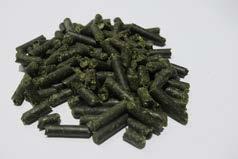
with incremental dietary inclusion of U. dioica. Among the haematology parameters: red blood cell (RBC), white blood cell (WBC) counts, haematocrit (Htc), mean cell haemoglobin (MCH), mean cell haemoglobin concentration (MCHC) and neutrophils became elevated with increasing dietary inclusion levels of U. dioica, some linked to fish size and stage of growth. Serum immunoglobulins, lysozyme activity and respiratory burst were the main innate immunological parameters in the adult and juvenile L. victorianus recorded and were raised with dietary levels of U. dioica. A post-trial challenge infection with A. hydrophila, U. dioica at 5% showed significantly higher relative percentage survival (up to 95%) against A. hydrophila. Conclusions were drawn that U. dioica can stimulate fish immunity and make L. victorianus more resistant to bacterial infection.
Mehrabi et al (2020) assessed nettle meal on rainbow trout performance with incremental levels of nettle powder added to the fish feed at three doses, 0.5,1 and 1.5 percent respectively. At the end of an eight-week feeding period, the fish were exposed to Saprolegnia parasitica over a three week period. All groups receiving nettle diets displayed significant elevation in weight gain and Specific Growth Rate (SGR), and decreased Feed Conversion Ratio (FCR) compared to the control trout. Feeding the fish with dietary nettle also produced significant increases in blood indices and non-specific immunity in comparison with the control treatment. Interestingly, rainbow trout fed 0.5 percent of dietary nettle yielded higher expressions of TNF-α, IL-1b, IL-6 and IL-8 genes following eight weeks of feeding. A significant reduction in mortality rate was observed in the fish fed with 0.5 percent of nettle compared to the control following the regulated infection with S. parasitica. On termination of the trial, mucus samples obtained from the integument of trout were examined for composition and activity. Fish fed stinging nettle exhibited enhanced antagonistic actions against specific bacterial pathogens (Streptococcus iniae, Yersinia ruckeri, Vibrio anguillarum and Lactococcus garviae) in mucus. Skin mucus enzyme activities (alkaline phosphatase, lysozyme, protease, and esterase) improved and elevated protein levels in 2 and 3% fed groups were detected with the highest being for the three percent supplementation group.
Other work on fish has centred on modulatory effects to obtain more detailed evidence of the effects of nettle as a functional feed supplement. In general, nettle was reported to play a positive effect on many parameters associated with blood biochemistry markers, liver enzymes, antioxidant status and immunological system components. The optimal dietary inclusion rate ranged from 0.5 percent nettle powder up to three percent and a 1-2 percent nettle content in diets showed significant effects on growth and feed utilisation metrics giving superior performance. The reduction of several liver associated enzymes in blood serum of fish such as lactate dehydrogenase (LDH), Alanine transaminase (ALT) and aspartate aminotransferase (AST) are indicative of a healthier liver and less leakage of these marker enzymes into the blood. It is likely therefore that nettle can lead to greater integrity of the hepatocyte cells of fish.
In a more recent investigation for fish, Martin and Hardy (2023) were the first to pioneer research on the potential of Urtica in experimental diets for Atlantic salmon (Salmo salar). This trial examined how the Atlantic salmon performed when fed nettle supplemented diets from a high-quality consistent source
“In Tasmania, they had plans to convert a former cardboard factory into a fish feed factory. And so it happened. An almost 30-metre-high silo tower for storing raw materials for the fish feed, all according to the applicable Australian codes.”
Sven Konings, Commercial managerLocation: Application: Tasmania, Australia Aqua Feed, storing block
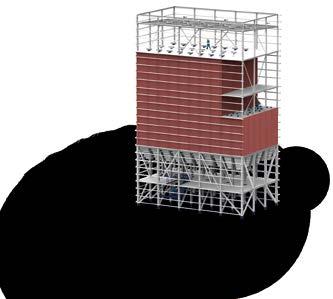
www.tsc-silos.com
Scan for references!
Get your FREE field guide to feeding fish
Discover the power of knowledge in this meticulously crafted compendium on fish, feed utilization, and farm maintenance.
Learn how to grow sustainably and apply modern practices to your fish farm.
Download a free copy today and immerse yourself in the sea of holistic knowledge on fish farming!

Something
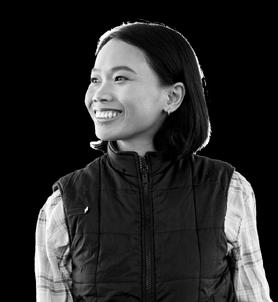
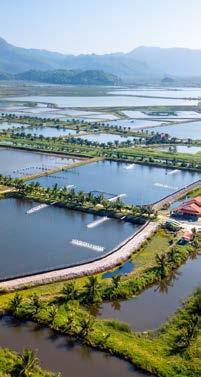
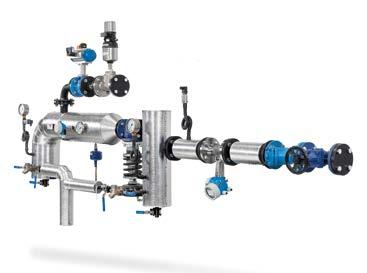
Anticipating data facilitates predictive maintenance
Recommendations for optimisation
Increases user expertise of steam dosing
(Urtica+plus®). The nettle was generated by a leading industrial partner Urtica+ plus who farm nettles in the UK and generate a highly consistent product used extensively as an animal feed additive.
Three main objectives from the study were 1) to refine diet design and conduct a feeding trial, 2) evaluate selected intestinal health and blood parameters, following the feeding trial, and 3) assess the response and status of the immune system following pathogen challenge using various criteria. Overall, the conclusion was that salmon fed one percent and three percent nettle supplemented diets had blood parameters which are within the normal expected ranges for healthy Atlantic salmon. Several parameters would suggest a marginal increase in key health-associated biomarkers, but further work would need to be carried out and an independent trial to confirm these results. Histomorphology of the distal intestine examined six key parameters to characterise intestinal health for structural integrity. Here it was observed that two parameters i.e., subepithelial mucosa and supranuclear vacuolisation gave superior scores in three percent nettle compared to one percent and control fed salmon. For remaining histological parameters there were no significant differences between control and nettle fed fish, however there was a non-significant improvement in several parameters observed in the one percent nettle fed fish.
The ability of salmon to generate an efficient immune response following the feeding trial was definitively tested by using a bacterial pathogen challenge test with Aeromonas salmonicidia the etiological agent of furunculosis (a well described salmonid disease). A further nine fish per diet were used as control which were injected with Phosphate Buffered Saline (PBS). These authors reported highest survival in the salmon receiving
a 3% nettle powder diet at 43.3%, with fish fed 1% having 36.7% survival and those fed the control diet exhibiting lowest at 33.3% survival (although this did not reach significance) indicating a trend of improved survival with increasing nettle supplementation. All the fish that were injected with PBS (control group) survived the full 15 days trial.
Atlantic salmon are a very lucrative and highly valued farm fish species as are rainbow trout in Scotland, Norway, Chile, Canada, and USA. Other important marine fish are seabass, seabream, grouper, and flounders such as turbot and halibut. There is also significant production of warmwater fish species like tilapia and pangasius as well as many carp species within the Indian subcontinent and extensively in Southeast Asia and China. Given the scale and intensity of production, building resilience, and mitigating disease and use of antibiotics is paramount. Nettle can therefore play a vital role in our armoury of functional natural feed additives and supplements for the aquafeed sector. More research is required for nettle in diets for these other fish species and shrimp.
Conclusion
In summary, the common stinging nettle Urtica dioica has been shown to have a plethora of functional characteristics having been evaluated under rigorous research trials with several animal species from production animals such as poultry, pigs, and young ruminants, companion animals, dogs, cats and equine and now increasingly for aquatic species. The work on fish provides validated and authoritative preliminary evidence regarding efficacy and safety of nettle with much relevance to sustainable aquaculture.
(References are available on request)

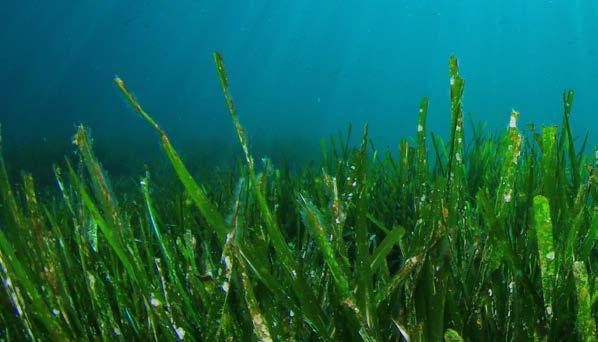
In the evolving landscape of animal nutrition, the use of innovative and sustainable solutions has never been more critical. Ocean Harvest Technology (OHT), a pioneering feed company with its headquarters in London, stands at the forefront of this transformation, leveraging the potent properties of seaweed to enhance animal health and productivity.
Ocean Harvest Technology was established with a clear mission to research and commercialise the diverse applications of seaweeds. Initially focused on various sectors, the company has now honed in on animal and fish nutrition. The driving force behind OHT’s products is extensive research demonstrating that polysaccharides and other bioactive compounds in different types of seaweed act as prebiotics in animals. This research has consistently shown significant benefits, including higher growth rates, lower mortality, and greater feed efficiency across various animal trials.
OHT’s flagship products is OceanFeed Aqua, a natural feed additive that sets itself apart from conventional products. Unlike many feed additives that rely on synthetic ingredients and preservatives, OceanFeed Aqua are harvested from their natural habitats, processed into various forms such as powder, pellets, or crumbles, and have an impressive shelf life of up to three years. This all-natural approach not only ensures the purity of the product but also meets the growing consumer demand for
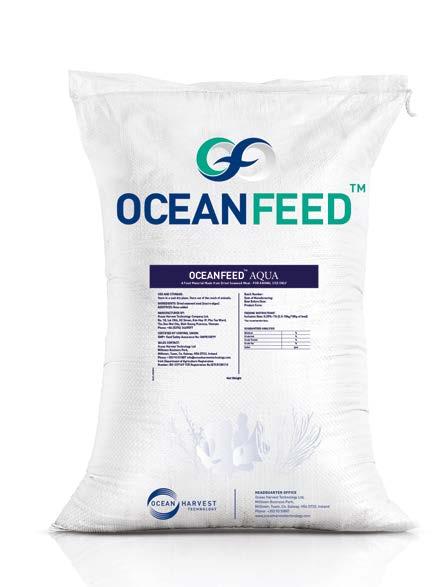
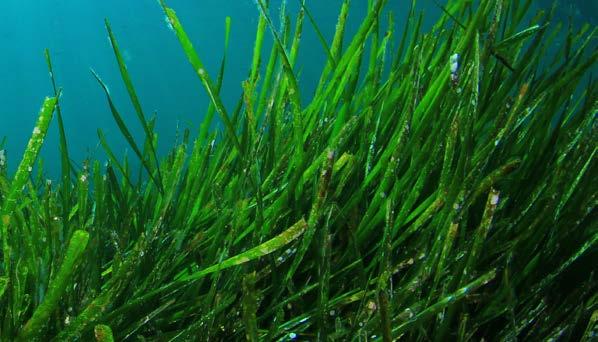

sustainable and environmentally friendly solutions.
CEO Mark Williams elaborates, “We’ve consistently seen shrough the animal trials that we’ve done, for aqua products and others, that this product leads to higher growth rates, lower mortality and greater feed efficiency. And so the business now is very much about maximising the commercial expansion of blended seaweed product into aquaculture and other animal nutrition sectors. We don't need to add any additives, carriers,
preserving agents or whatever. So it's an all -natural product which is being processed easily to powder, pellets, crumble, whatever your production system needs."
Nico Stein, CCO, added, “And it has three years shelf life. So that’s for me, being around that industry for over ten years, absolutely unique. It is very well perceived by the market and customers. It’s the first product I’ve seen in the additive business that is being actively searched and asked for.”



animal feed products from OHT, covering a wide range of recipes of the various seaweeds that they use.
“It protects pretty much the whole scope of the business that we have. I think it also represents, because it’s such a wide ranging patent, as close as you can get to an external verification of first mover advantage”, says Mark.
Sustainability is at the core of OHT’s operations. The seaweeds used in their products are sourced globally and are predominantly invasive wild-blooming varieties. These seaweeds, which thrive on excess nutrients from agricultural and human activities, can be ecologically damaging if left unchecked. By harvesting these invasive species, OHT not only mitigates environmental damage but also creates a sustainable supply of raw materials.
The company’s initial manufacturing facility in Vietnam has expanded its sourcing to other parts of Southeast Asia, including Indonesia and the Philippines, as well as Eastern Africa. This global diversification of the supply chain ensures a steady and sustainable supply of seaweed, enabling OHT to meet growing demand while maintaining environmental integrity.
OHT’s stock price has seen a significant rise, reflecting investor confidence in the company’s strategic direction and market potential. The company continues to invest in three core areas - sales and marketing, supply chain, and intellectual property development. By expanding sales channels, diversifying supply sources, and investing in ongoing research and trials, OHT aims to demonstrate new applications and benefits of its products.
One notable trial involved shrimp, where OHT’s product demonstrated significant performance benefits, including improved survivability in the presence of disease challenges. As the company continues to expand its global reach and innovate, it stands poised to lead the way in the next generation of animal nutrition.

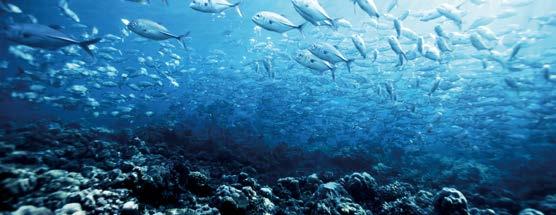
UNDERSTANDING YOU. STANDING BY YOU. NEVER STANDING STILL. We provide complete plant solutions for aqua feed production to your exact specifications and with industry-leading cost efficiency by leveraging our extensive processing expertise and experience. By harnessing the power of automation and digitalization, we ensure continuous innovation to keep you at the forefront. AND with the industry’s most trusted services, we are always there for you.
ANDRITZ FEED & BIOFUEL andritz.com/feed-and-biofuel-en
For more information, visit our website.
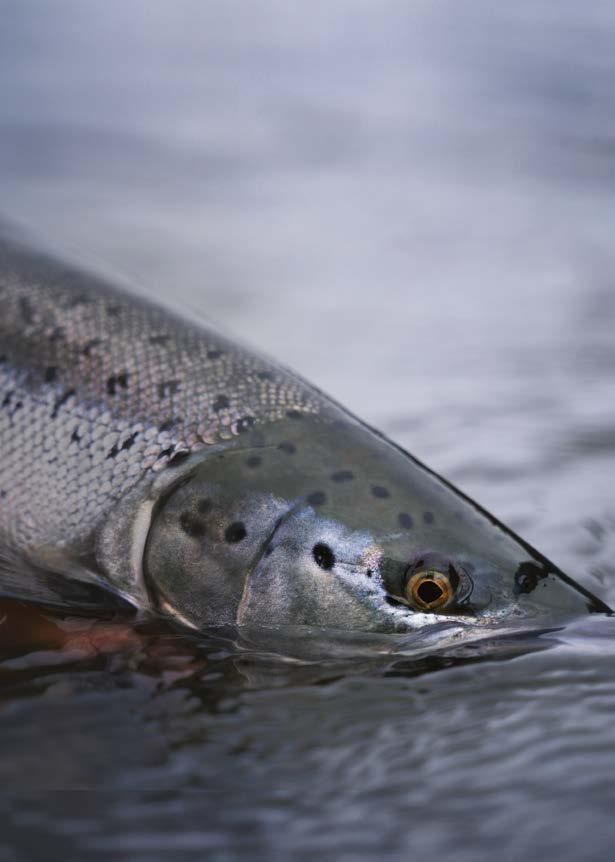

In aquaculture, fish and shrimp are constantly exposed to pathogen pressures, environmental fluctuations and other production stressors, negatively impacting survival and productivity.
At dsm-firmenich, we offer solutions to protect aquatic animals, reducing the risk of health and welfare challenges throughout the production cycle.
Learn more at dsm-firmenich.com/anh
The coating system MT is a complete machine able to mix in line pellets, kibbles, and other granulated products with additives such as liquid enzymes, fat, digest, aromas, oil, medicines, vitamin. The machine is used in combination with the powerful sprayer MicroSMOG and guarantees a perfect coating of the product. Paddles are tiltable for a better performance of the machine.
• Allows to apply additives and ingredients after mechanical and thermal processes without ruining their physical properties
• Allows to reduce the risk of cross-contamination in the production line
Reduces the consumption of liquid additives with a consequent economic saving
It is also suitable for large flow rates
https://plp-systems.com
http://myaqua.info/JImi
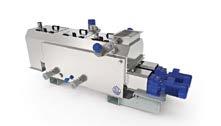
The strict demands placed on the mixing operation in feed mills built the foundation for the design standards of the Anderson Feed Technology line of high accuracy mixers. One of the most widely used solutions is the Anderson Feed Technology single shaft paddle mixers. All Anderson Feed Technology paddle mixers are designed for mixing dry ingredients regardless of their bulk density or shape with the option for liquid addtion as well.
The Anderson Feed Technology paddle mixers are equipped with pneumatic operated bomb doors under the full length of the mixing trough. This shortens the discharge time to approximately 15-20 seconds. The mixing plant can operate fully automatic with a capacity up to 15 batches per hour.
www.andersonfeedtech.com
http://myaqua.info/ihGM
The large inspection hatches of the Wingdoor Sifter allow the operator to access all relevant parts quickly and easily for inspection and maintenance. In addition, sifting baskets can be replaced ultra-quickly. This is the reason that when there are many product changes, the Wingdoor Sifter is preferred. Because of its ergonomic design, cleaning the sifter does not take much time and effort from the operator. And because the sifting baskets can be replaced ultra-fast, it is possible to change quickly between products.
Suitable for many product changes
Designed for ultra-fast sifting basket changes
• Easy to clean due to large inspection hatches
www.dinnissen.com
http://myaqua.info/tzmt
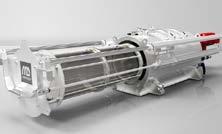

Do you have a product that you would like included in our pages?
Send your product information to editorial@perendale.co.uk

Selected Bacillus spp. strains

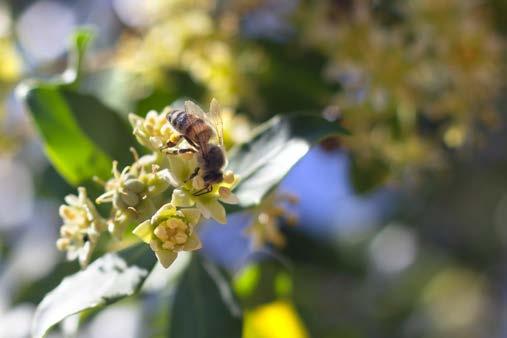



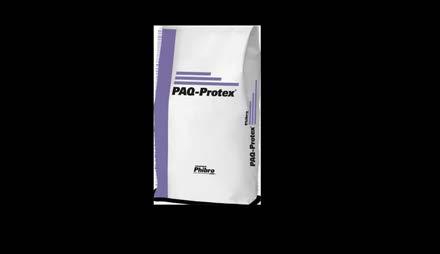


Iwas watching the traffic on TV one morning. Very heavy traffic going into town. And especially this particular morning, for the authorities have closed the public transport (bus/taxi) lanes to electric cars, as of today. Owners of electric cars have enjoyed a number of privileges in Norway, including the right to drive in public transport lanes. But now the number of electric cars is so great (nine out of ten new cars registered are electric!) that these privileges have had to be withdrawn.
Transport in and out of city centres has become very difficult in all metropolitan areas. So I can fully understand those who subscribe to the idea of producing food inside the urban centres. Some time ago, I was reading a report on the ten most important trends in aquaculture, and right on top of the list was urban aquaculture! Producing all kinds of aquatic animals in the city, close to the market. A wonderful idea, but is it practical?
There appears to be two major drivers behind the move to urban aquaculture: the need for freshness, and the need to cut down on transport (both time and cost).
Freshness is of course a major concern when it comes to seafood. Seafood spoils easily, and the sooner you can consume it after it has been killed, the better. This need for freshness was behind the trend in Asian cities, where many restaurants installed seawater tanks to store live fish and other seafood until customers ordered these items. And now, the trend is to move even production into the city centres.
Not surprisingly, we find modern examples of urban aquaculture in the city state of Singapore. Singapore has very limited space available, both on land and sea areas. At the same time, Singapore is a city that really loves seafood. So the market is definitely there. Singapore does not produce enough seafood for its domestic consumption. Most of the seafood sold in Singapore has to be imported, mainly from surrounding countries (Malaysia, China, Vietnam, Indonesia, Thailand,). In fact, just over 75 percent of Singapore’s seafood imports (by volume) came from these five countries in 2021.
No wonder that smart entrepreneurs are seeing an opportunity for urban aquaculture here. Top restaurants are always looking for high quality seafood, and that means fresh seafood.
The company Vertical Ocean was started as just an idea in 2016 and has recently become fully operational. The company offers ultra-fresh seafood (shrimp) delivered to your home or to restaurants on a same-day basis.
The technology that goes into production is complex and consists of no less than 83 different technologies that have been

adapted and combined into one whole. Because of space, the operation had to go vertical, and it had to be compact (land costs in Singapore are astronomical).
The production setup consists of a number of movable tanks, and the company focuses on shrimp, which is a highly priced and popular seafood item in Singapore. Vertical Ocean can deliver completely fresh shrimp, harvested the same day, in a matter of hours, and thus satisfies even the most quality-conscious chefs.
Transport is short, quick and cheap. Singapore is a small island, and it never takes more than an hour to drive from one end of the island to the other.
Thus, the two main considerations are taken care of: freshness and transport.
One concern that comes to mind is of course: is it profitable?
I found no definitive answer to that in my research about Vertical Ocean. But based on experiences with land-based operations elsewhere, urban or land-based aquaculture may be facing problems. The “flag-carrier” of land-based salmon farming, Atlantic Sapphire, has certainly had its share of problems, mainly biological and technical, and is still not turning a profit. Whether a much smaller operation, producing shrimp in Singapore, can do better, remains to be seen.
Eventually, urban aquaculture will probably have to succeed. But at what price? The urbanisation of most countries will force the development of urban production in many areas. Or it may force people out of the cities and back into the countryside. I, for one, have chosen the latter solution. I chose to move from the city to the countryside to get away from traffic, exorbitant car park costs and toll road charges that have just become prohibitive. I now enjoy life in the countryside, with the fjord as my nearest neighbour and plenty of fresh seafood available right here.
The only manufacturer worldwide that covers all feeding stages of fin fish and shrimp, for land or sea based systems.

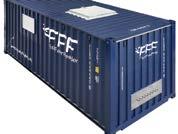
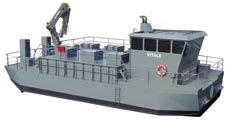



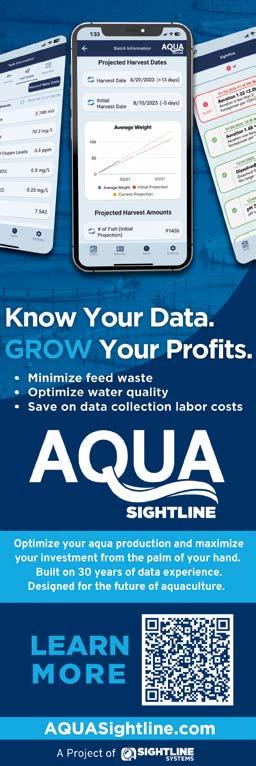
Sustainability is on the agenda and we see that trade associations and salmon producing companies are on the path to calculating and publishing their carbon footprints. To support this salmon farming process, Garware Technical Fibres has created Renew Ropes: the first rope made from 100 percent recycled materials, the use of which leads to a 50 percent reduction in the carbon footprint.
“The introduction of 100 percent recycled ends shows our commitment to the Clean Production Agreement (CPA), circularity and the reduction of plastic waste, contributing to sustainability throughout the life cycle of the products. In addition, it has exhaustive quality control of its raw materials: 100 percent reprocessed copolymers so that it meets the required quality,” comments Marcos Jofré, Business Associate Garware Technical Fibres Chile.
The company recently developed this 100 percent recycled product, which meets the need to be more sustainable, while maintaining its quality standard. The properties it equates are: useful life, density, weight, resistance to traction, fatigue and abrasion. Its use is wide: maritime, sports, fishing and aquaculture; available in three and eight strands.
Plastic waste takes thousands of years to decompose, “by manufacturing Renew Ropes with 100 percent recycled material, we ensure that the waste is used in a final application, along with reducing the need to produce new material, and this rope can also be used again. The Norwegian market is already being supplied with a good reception and we hope that Chile follows this trend,” says Jofré
X2 Aqua Neo: high-performance ropes that is ideal for exposed centres
For its part, X2 Aqua Neo has high resistance at a smaller diameter, low elongation, and is lighter. “The quality of the fiber is such that with smaller diameters, it manages to deliver higher resistance than other anchor ropes. It also presents great resistance to cyclic loading stress, with a very good result, measured under the OCIMF standard (of the international marine forum of oil companies), with an excellent fatigue life over tension. Our tensile fatigue test (TCLL) is higher fatigue than common ropes. In addition, it is quick to handle, with lower installation costs and also in anchoring items, easy to splice, it reduces the load on the anchoring system, due to its lower drag and weight,” says Jofré
Both have Norwegian Standard 9415 (NS9415) certifications, which confirms that it works technically and OCIMF standard. Since aquaculture centres use a large volume of ropes – for all types of applications – these occupy an important place on the agenda. “Now offering a rope made of recycled raw materials, such as renew ropes, which reduce the carbon footprint by 50 percent, is a contribution to the clients’ sustainability strategy,” emphasises Jofré.
It should be noted that Prodalam is the one that distributes ropes for the aquaculture industry in Chile, through a strategic alliance for a decade. “We support the development of this Garware line, with large and small ropes at good costs and with a large stock availability for salmon production regions,” says Alberto Pino, aquaculture manager at Prodalam.
Mat-Kuling, a Norway based RAS equipment manufacturer company, recently confirmed its focus on the fast-developing Aquaculture RAS solution market in Asia with Wonjin Fisheries Co.Ltd. in South Korea. Wonjin has been involved in Aquaculture of Seafood for more than 30 years and brings onboard deep insight into the South Korean market specialties.
Wonjin’s team, recently visited Mat-Kuling’s factory in Izmir, Turkey, to receive training on the RAS equipment produced by Mat-Kuling. This technical visit is part of our ongoing efforts to enhance their capabilities in ongoing land-based aquaculture projects involving shrimp, grouper, salmon, and seaweed, for which Mat-Kuling supplies equipment.
International Aquafeed met with Nil Llussà, RAS Specialist and Biologist at Mat-Kuling at the Fish International show in Bremen recently. He emphasised, “We are a one -stop supplier of RAS equipment. That’s our biggest strength, in the industry, because fish farmers can come directly to us and we can provide all that’s necessary to get their RAS operation started.
“Also, we also supply other equipment in other types of land-based systems as well. Our equipment are of very good quality, all manufactured in Turkey by our engineers and personals working in our factory.
“We built this facility last year as an expansion and we generally produce our equipment with high grade polypropylene.”
Mat-Kuling’s aim is to cooperate with fish farm developers and third-party consultants to provide comprehensive filtration equipment that would exceed their yield production targets and meet local environmental legislations. Their RAS department is available to be subcontracted by aquaculture consultants and fish farm developers, as well as, fish farm owners, to fabricate customised equipment under their own design, brand and needs.

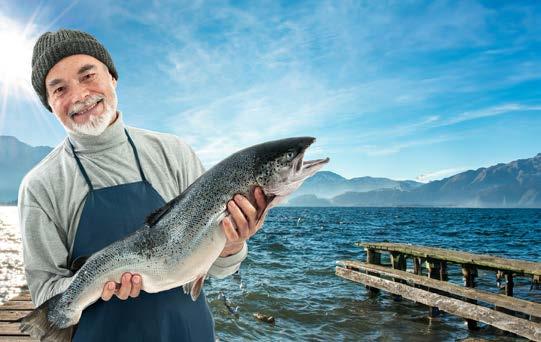
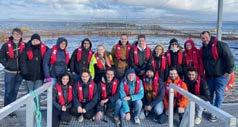
Leveraging expertise in artificial intelligence (AI) and marine biology, BiOceanOr, a French start-up, is using AI technologies to help manage water quality and promote sustainable practices. They have developed AquaREAL, a unique service predicting water quality. Their mission is to deliver bio-guided services that optimise fish welfare and growth, while supporting sustainable aquaculture practices.
“I am delighted by the invaluable support from BlueInvest for our fundraising efforts, which has substantially enhanced our brand visibility.” said Samuel Dupont, CEO and co-founder.
Thanks to BlueInvest support, the start-up successfully raised its first round of funding in June 2023, amounting to €2.5 million.
The journey towards aquaculture innovation
Starting from its roots in oyster farming, BiOceanOr’s has expanded their sales range to diverse aquaculture products, including salmon, seabags, bream, tilapia, shrimp and algae. However, as they secured contracts with major French water companies like VEOLIA, concerns arouse regarding the environmental impact of their operations.
Driven to minimise their ecological footprint and mitigate potential repercussions for both downstream and fellow aquaculture enterprises, BiOceanOr set their sights on developing a tool that would ensure safe, environmentalfriendly and efficient operations at farm level.
Smir Group has entered into a contract with Andfjord Salmon for the delivery of the waterborne feeding system Smirfeeder to their land-based facility on Andøya in Norway. The two companies will also look at the possibilities for extended cooperation around the delivery of solutions and services linked to other parts of Andfjord’s production in the years ahead.
Frode Rygh, Sales Manager of Smir Group, commented “We are very proud to be chosen as supplier of feeding system to this project. Andfjord Salmon aims to build and operate the world’s most sustainable fish farming facility of its kind, and it is inspiring to be able to help them
To address the data gap, BiOceanOr embarked on creating a digital solution to advance aquaculture. Going beyond simple monitoring, their innovation aimed to offer real-time insights and AI-powered analytics. This empowers aquaculture producers to foresee environmental shifts and proactively manage risks.
Real-time data from an underwater weather station BiOceanOr’s AquaREAL water quality assistant provides real-time data for farmers and customers. The tool predicts crucial water quality parameters such as dissolved oxygen levels and assesses their impact on production and the marine environment.
Their innovation can work with different types of sensors and monitoring devices. It benefits aquaculture by enhancing downstream applications, boosting fish growth and ensuring fish welfare. Furthermore, it aids water utilities in managing wastewater discharge and optimising operations in the watershed.
BlueInvest has played an important role in BiOceanOr’s journey. The programme provided them with valuable guidance and connected them with partners across Europe. Through pitching and coaching sessions, they were able to gain insights from experienced members of the BlueInvest community. In particular, the programme’s support and visibility have been crucial for BiOceanOr in attracting new investors, clients and partners.
Samuel Dupont, CEO and co-founder, acknowledges the value of BlueInvest support in fostering financial partnerships. The investment raised during its first round of funding (€2.5 million) will fuel the expansion of the company’s activities in the salmon farming industry, particularly focusing on water quality prediction to mitigate risks and delivering actionable insights for production optimisation.
Furthermore, BiOceanOr has recently announced its collaboration with ScaleAQ Software, a major player in the tech-aquaculture industry. Together, they aim to improve fish farming by offering fish farmers unrivalled digital services through reference integration platforms.
to achieve this goal by using our waterborne feeding system.
“By being able to gently transport feed with different properties and structure, such as a softer pellet, we firmly believe that we can challenge existing feeding systems by delivering significantly better fish welfare
“We’ve had a good dialogue with Andfjord Salmon over a long period, and as we have gotten to know each other we have come to realise that we have much in common regarding the design of tomorrow’s technology and services, which also includes areas other than just feed logistics. We do look forward to taking a closer look at which synergies we can collaborate on in terms of technologies and services in the coming years.”
Christian Torgersen, COO of Andfjord Salmon, said “To ensure the good biological results we achieved in
the Pilot and a further development of the performance, we are very pleased to have entered into a collaboration with Smir on the delivery of waterborne feeding system. We believe we have found an innovative partner who is as highly focused as we are with biological results and technological development.
“It was about finding a feeding method that was best suited to the concept and choice of feed type.
“By further developing the technology for feeding, we will also together with feed supplier Skretting, shape the future structure of pellets and its nutritional content.
“In addition we’ll get all the significant benefits when it comes to matters such as low energy consumption, no microplastics and the integration to the infrastructure on land.”

With light sensitivity of as much as 0.0001 Lux, Orbit FHD Fixed is one of the most light sensitive cameras in the market. The camera is designed to be fixed either upwards, horizontally or downwards in the pen, and is not delivered with typical pan/tilt solution. It has a resolution in full HD, and increased field of view by 120 degrees, which means that the operator gets a good overview even with a fixed camera. It also comes with simplified infrastructure requirements –power and signal in the same cable.
ScaleAQ is a world class supplier of cameras for the global aquaculture industry. Since 1985, they have been helping aquaculture operators to perfect feeding using video images from their pens.

Optimising production with the use of new innovations in fish farming technology is proving invaluable in the industry. Methods include AI and data-driven solutions, such as ‘transfer learning’, to monitor fish health and growth to improve decisionmaking.
In the heart of Oslo’s historic centre, a team of young engineers and software developers gather at their company’s quirky offices. Brimming with creative energy, they work on a challenge far removed from their urban environment: offering fish farmers realtime tools and insights to optimise production.
With its origins in the oil & gas industry, Solution Seeker might at first seem an unconventional partner for fish farmers. The tech company was founded over a decade ago as a spin-off from the prestigious Norwegian University of Science and Technology (NTNU); it is now turning into one of Norway’s most promising Industrial AI companies by building solutions driven by real-time sensor data.
As Vidar Uglane, Solution Seeker’s CCO and co-founder – who grew up overlooking oil rigs and fishing vessels in Norway’s

scenic west coast – puts it: “Both industries have more in common than topping the list of Norwegian exports: they often lack direct measurements as inputs for production optimisation. So, they require innovative solutions to infer crucial parameters indirectly, called ‘soft sensors’, which we happen to specialise in. For instance, flow rates for individual wells in oil & gas, and biomass/growth rates in aquaculture, all of which can be derived from other measurements and displayed in your browser.”
Using data in real-time to support production decisions in a timely manner – and thereby staying optimal over time – is non-trivial. Solution Seeker’s patented technology for oil & gas combines information from various sources such as pressures, temperatures, and valve openings to estimate flow rates accurately and in real-time. Through a technique called ‘transfer learning’, a deep learning technique, the company achieves impressive results based on relatively little historical data, bridging the data gap by training the models on thousands
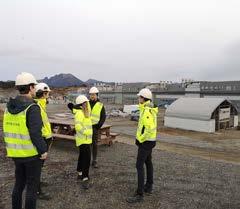
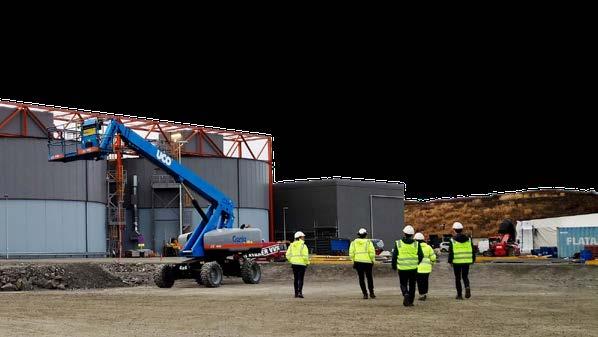
of different wells.
Similarly, in fish farming, soft sensors learn from different fish batches and leverage diverse data inputs including water quality metrics, feed consumption rates and more sophisticated sensors such as cameras to infer growth patterns and other key parameters
of the fish population, which can then be monitored in real-time for better and quicker decision-making.
In the aquaculture industry, competitiveness will increasingly be driven by access to technology that monitors and supports quicker and better decisions on fish health and nutrition, while


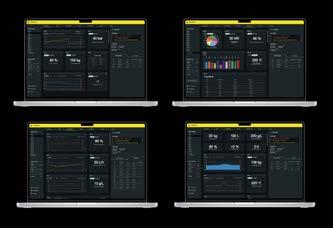
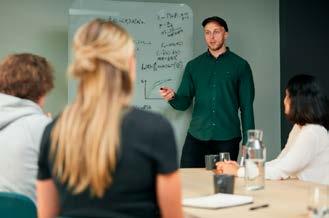
simultaneously mitigating disease, stress, and the necessity for antibiotics and vaccines. Installing more sensors makes the decision process more informed, but also more complex. Furthermore, many players move into closed systems, where the environment is more controllable from spawn to harvest.
Salmon Evolution, who is at the forefront of land-based farming of Atlantic salmon, has been an early adopter and proud customer exploring functionality related to projections of growth rates, conversion of feed into biomass, resistance to disease, as well as water quality indicators.


“The collaboration with Solution Seeker enables us to gather and present real-time information that where earlier impossible to gain effectively. Furthermore, analysis and understanding of the huge amount of data gathered at our sites provide us with a key advantage in creating and maintaining the best possible biological environment for our salmon.” Says Jon Åge Stakvik-Løvås, automation engineer and project lead digitalization, Salmon Evolution.
Fine Grinding Solutions for Fish & Shrimp Feed
` Established at leading aqua feed producers worldwide
` Hammer mills with up to 98 % < 500 µm
` Grinding solutions with sifters with up to 99 % < 400 µm
` Classifier mill for pulverizing with up to 99 % < 150 µm


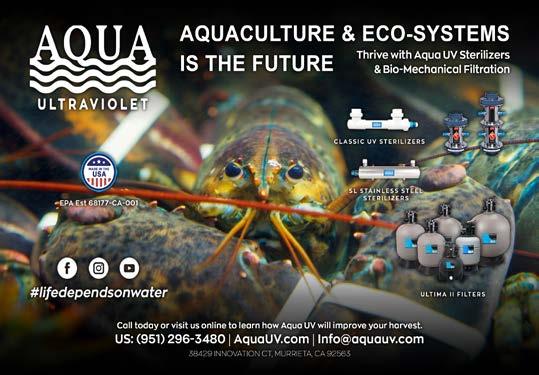
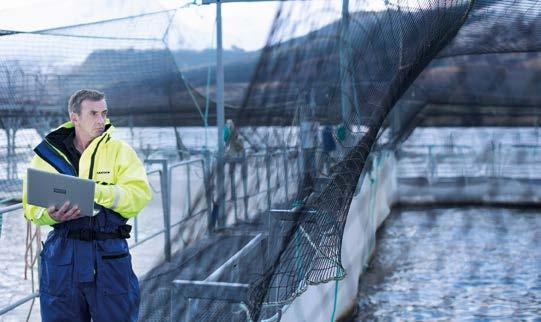


In today’s fast-growing and competitive aquaculture industry, utilising data and analytics can give you a significant edge in optimising your farm operations, increasing efficiency, and maximising profitability. By collecting and analysing relevant data, you can gain valuable insights into various aspects of your farm, such as water quality parameters, feed conversion rates,

growth patterns, disease prevalence, and environmental factors. These insights will ultimately help your operation be ready to grow, intelligently, while increasing revenue by helping meet the ever-growing demand for seafood around the world.
“The best farmers keep their eyes on three primary areas: Inputs, the processes of husbandry, and outputs,” says Tony Vaught, Aquaculture consultant with Aqua Sightline. “By categorising and collecting data in these three key areas the farmer can adjust and evaluate interactions between the three areas to maximise production and manage costs.”
Data collected within these areas varies. For instance, a controlled indoor system has different requirements than an open pond or net-pen operation. A flowthrough raceway system operates differently than a site that recirculates water.
With data-driven decision-making, you can make informed choices about feed management, stocking densities, batch harvesting schedules, and disease prevention measures. For instance, by analysing water quality data, you can identify optimal conditions for your species and adjust parameters like dissolved oxygen levels, pH, and temperature accordingly. This can lead to improved growth rates, better feed conversion, and increased survivability that are repeatable and sustainable throughout your operation making each harvest more profitable than the last.
Moreover, analysing historical data on growth patterns and

environmental factors can help you predict future performance and plan your production cycles more effectively. This can assist in better inventory management, reducing waste, adaptability to environmental challenges, and meeting market demands more accurately.

Data can feed into the Aqua Sightline platform, seamlessly from monitoring equipment and field entries. Observations by those caring for the fish are extremely important. These observations can be logged and evaluated to make real-time changes and to evaluate future production adjustments. Data does not have to change hands from a notebook to a spreadsheet to the evaluator. Communicating swiftly and intelligently can avoid catastrophic losses.
“Adopting data and analytics doesn’t have to be complex or expensive and you don’t need to hire a data expert on your staff anymore,” says Vaught.
“User-friendly software solutions and cloud-based platforms such as Aqua Sightline are specifically designed for aquaculture operations to streamline
real strength of Aqua Sightline is the fact that it is built upon 30 years of experience in data, analytics, and security with its parent company, Sightline Systems.”
The Aqua Sightline app is at the forefront of modern data-driven aquaculture while being affordable and easy to operate from the palm of your hand. From projected harvest dates and feed recommendations to water quality analytics, Aqua Sightline puts the data you need at your fingertips and provides the real-time alerts you need to react quickly and make the best decisions for your bottom line every time.
In today’s competitive landscape, embracing data and analytics can give you a significant competitive advantage, enabling you to optimize operations,

• Mariculture and Aquaculture leases
• Aquaculture and mariculture disputes
• Commercial fishery issues
• Acquisition and ownership of fisheries
• Registration of fishing rights
• Defence of fisheries prosecutions
• Seizure of fishing vessels
• International fishing licenses
• High seas fishing

Automation is helping shellfish farmers navigate soaring energy costs, a strong labour market, and market volatility. The requirement for oyster farmers to innovate their farms by investing in technology is under the spotlight. Many have embraced new technologies to improve the overall performance of their operation.
Automation of the oyster grading or sorting system is fast becoming a necessity rather than a luxury and its inclusion is having a significant impact on oyster farming efficiencies and profitability. While farms adopt digital technology that oversees the oyster growing operations and assists farmers in making critical decisions on the health of their crops, automating the labour-intensive process of oyster grading is solving the problems of staffing, resource deployment and speed to market demands.
The ability to immediately grade, sort, and bag the oyster harvest without complex staff scheduling perfectly complements commercial oyster farming operations. By employing automation technology, oyster farming aligns with the advancements made in other primary producer sectors such as agriculture and livestock. Oyster farmers are acutely aware that any investment in infrastructure must create cost-benefit outcomes, improve productivity and reduce operational overhead. Recent global issues with staff shortages have added further complexities to oyster farmers needing to streamline their operations, find efficiencies to remain competitive, and see significant improvements to the bottom line.
The team at SED Graders, an innovation and automation company based in Tasmania, Australia, has worked with Australian oyster farmers and professional industry bodies for the past 20 years, solely focused on developing automated oyster grading technology that positively influences the productivity and efficiencies for oyster farmers.
The integration of automation technology is reshaping traditional practices and driving valuable efficiency and productivity gains. At the forefront of automation is the SED Vision Oyster Grader, a multifunctional machine designed to streamline operations and optimize the grading process. One of the most significant advantages of the SED Vision Oyster Grader is its ability to enhance productivity by up to 400 percent. By performing a comprehensive array of tasks, including separation, cleaning, measurement, sorting, counting, and bagging, this innovative technology eliminates the need for manual grading processes, freeing up valuable time and resources for oyster farmers.
Central to its success is its precision and accuracy. This system
by SED Graders, Australiauses cushioned air technology to achieve an impressive oyster sorting accuracy of up to 99 percent, surpassing traditional manual sorting methods. By ensuring consistent and precise grading, oyster farmers can confidently deliver high-quality products to their customers, enhancing their reputation and market competitiveness.
The versatility of the SED Vision Oyster Grader has won over many oyster farming operations of various sizes. With highly customizable configurations, this grader can be tailored to align with the specific production demands of individual oyster farms. Whether it’s selecting from options featuring four, six, or eight-grade exits or adjusting the size and quantity of bags to accommodate varying production outputs, oyster farmers have the flexibility to optimize according to their specific requirements.
The SED Vision Oyster Grader enhances productivity and improves overall operational efficiency by automating laborintensive tasks and streamlining the grading process. With reduced manual intervention, the SED Graders vision oyster grader user-friendly design facilitates effortless bag changes and can be operated single-handedly; oyster farms achieve higher throughput rates and minimize the risk of errors, maximizing yield and profitability.
There is no denying the need for speed, and the faster and more effectively mundane tasks can be completed, the more efficiently farming resources can be deployed. The SED Graders vision grader is fast. A SED Vision Grader with 4 lanes processes approximately 60,000 mature oysters per hour and requires a single operator to inspect for dead oysters and to change baskets or bags. With a proven accuracy rate of 99 percent, oyster farmers using the technology have complete confidence in how quickly and accurately they can grade, sort, and bag each harvest.
The SED Grader Vision oyster graders utilises video camera tech to grade and sort oysters. This tech enables oysters to be graded by size rather than weight, and with markets now prioritizing size over weight, investing in size-based grading technology fits most oyster farm strategies. The size-based grading approach offers a superior alternative to traditional weight-configured graders. A long and thin oyster will grade the same as a short wide oyster with the same weight. While conventional methods often result in wide tolerance margins and potential losses in sale value, the SED Vision Oyster Grader is designed and manufactured for precision and profitability.
SED Graders have several vision oyster graders already in use in the northern hemisphere, including Vancouver. The machines are
manufactured in Australia for the harsh coastal regions associated with the continent’s southern regions, and the transfer of experience has proven invaluable to the company’s international customers in the US, Canada, New Zealand and Japan. With a targeted push into North American markets, SED Graders continue to employ the same successful process when implementing their vision oyster graders, water oyster graders and associated grading equipment.
The team takes the time to discover the exact requirements of your oyster farming and processing facility.
No matter the operational size, they customize the equipment to fit your oyster farming operation’s exact requirements and dimensions, including how your farm processes its oysters. During the design phase, they provide scale drawings to illustrate how the machine will fit into your processing facility and make any adjustments before production begins. This phase is important as oyster farming practices vary considerably worldwide, and no one arrangement will fit all operations.
The SED Graders technical and engineering team builds your machinery at their Tasmanian, Australia facility. It undergoes comprehensive testing and commissioning before shipping to your site anywhere in North America. The team will conduct commissioning and extensive training on site to ensure complete confidence and operational integrity, plus provide a step-by-step instruction manual and video.
The oyster grader machines are manufactured from the highest grade stainless steel, engineered to withstand the rigors of harsh and remote oyster farming environments.
They are engineered to streamline your operation, requiring minimal maintenance. While boasting advanced technological capabilities, SED Graders has minimized its mechanical complexity to facilitate straightforward repairs. In the rare event of encountering
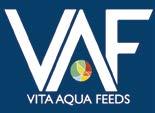
an issue, the SED Graders team offers comprehensive after-sales support globally, including remote access assistance via the Internet
Aussie-owned and supported by the shellfish industry
SED Graders is a family-owned Australian company based in Tasmania. The company has been designing and manufacturing innovative oyster grading systems and equipment for over twenty years. They work closely with professional oyster growers, the Tasmanian Oyster Research Council, and the FRDC (Fisheries Research Development Corporation). Most recently, the team has been developing a revolutionary cold shock treatment for overcatch. The ambitious project has garnered substantial support and co-investment from key industry players, including The Queensland Department of Agriculture and Fisheries (OAF), Fight Food Waste Cooperative Research Centre (FFWCRC), and the Australian Government’s Fisheries Research and Development Corporation (FRDC). These organizations have joined forces with industry partners such as Kooringal Oysters, Moreton Bay Rock Oysters, and Gold Coast Oysters to assist in testing and market entry development.
SED Graders is regarded as the leader in oyster grading innovation and technology. Its experience and successful integration into international markets enable the company to supply and service shellfish farming operations throughout North America with proven oyster grading machines and auxiliary equipment. They aim to help solve a range of problems for oyster farmers, improve their competitive positions, and enhance their reputational value in their respective markets.
SED Graders is open for business in North America, and now is the time to contact their team and automate your oyster grading process.






The Greek Aquaculture Producers Organization (HAPO) recently published its nineth edition of Greek Aquaculture Annual Report 2023, presenting the developments in the industry for the past year. The annual Aquaculture Report has been published since 2015 and the aim is to serve as a source of information not only for the companies and suppliers of the industry, but also for any interested party who wishes to be informed about the development of a rapidly growing sector of animal food production worldwide, such as freelancers, students, academics, media, institutional bodies and politicians.
Aquaculture in Greece experienced rapid growth in the early 1980s. At that time aquaculture accounted for only two percent (2,000 tonnes) of the domestic production of fishery products and capture fisheries accounted for the remaining 98 percent (105,651 tonnes). This ratio began to change gradually. Since 2003, the supply of aquaculture products in Greece exceeds that of fishing.
In Greece there are mainly three categories of aquaculture: marine aquaculture (fish, mussels), inland aquaculture (fish, eels) and extensive (lagoon) aquaculture.
Marine fish farming: Today, it is one of the most important sector of the country’s primary animal production sector, making Greece one of the leading countries in the production of Mediterranean species at European and international level. They are farmed using floating fish cages, a method that was widely used in Norway for salmon farming. In 1985 there were 12 farms with a total production of about 100 tonnes, today there are 285 farms with a production exceeding 120,000 tonnes. Mediterranean marine species are farmed in Greece, i.e. mainly sea bream and sea bass and, to a lesser extent, other Mediterranean species (new species) such as meagre and pagrus major. Fish farming is a production process that imitates the mechanisms of nature. It takes about 16-18 months for the fish to reach the desired commercial size of 400 g and requires scientific training and specialised know-how
Shellfish farming: it is the second most important category of aquaculture. In Greece, the Mediterranean mussel is farmed almost exclusively. In 1970, more systematic mussel farming began in parts of the Loudia and Axios rivers and was extended to Pieria, Imathia



and Kavala. The largest percentage of farms is located in the bays of Thessaloniki and Thermaikos. In 2019, the country’s first AOAD was established, in the Pieria marine area of Thermaikos Gulf, providing a solution to one of the main problems of the industry, namely the organisation and licensing of shellfish farming units. The relevant PD established the location and production zones of AOAD, the Management Body of AOAD and the modalities of its organisation.
Inland aquaculture: this category is a traditional form of primary production and a source of main or supplementary employment and income for people living in mountainous and remote continental areas. Today, 87 intensive fish farms are active, with rainbow trout being the main species, while carp and European eel are farmed on a smaller scale.
Extensive Aquaculture: In the Greek lagoons, traditional extensive aquaculture is also practiced with particular economic and social benefits at local level. Today there are 72 organised lagoon farms, mainly operated by fishing associations, covering a total area of 400 thousand acres. The main species produced are sea bream, sea bass, mullet and eel. The main reasons that fish are attracted to the lagoon are abundant food, suitable temperatures and the search for fresh water which is necessary for certain stages of their development. From March to June, shoals of small fish (juveniles) but also larger fish, enter the lagoon from the openings (connecting points between the sea and the lagoon) and are trapped in these places, the so called “divaria”, which act as natural fish farms.
In recent years, the industry has turned to a very small extent also to aquatic plants of great interest such as the cyanobacterium spirulina, the macroalgae ulva etc., which can be used as food supplements, raw material in the cosmetics industry, biofuels etc.
In 2021, total aquaculture production amounted to 151,300 tonnes with a value of 668.43 million euros, marking an increase of 5.5 percent in terms of volume and 12.5 percent in terms of sales value. Aquaculture accounted for 65 percent of the domestic production of fishery products, while fishing contributed 35 percent. The industry generated 12,000 direct and indirect job positions, primarily in coastal and remote areas. The main farmed species

were fish and mussels, representing 91 percent and nine percent of the total production, respectively.
In 2022, the production of Mediterranean fish farmed species reached 137,000 tonnes, worth 744 million euros, indicating an increase of one percent in volume and 14 percent in sales value.
Sea bream and sea bass were the primary farmed species, with production figures of 126,700 tonnes valued at 692 million euros.
Greek exports of sea bream and sea bass in 2022 amounted to 104,192 tonnes, valued at 600.6 million euros, reflecting an increase of 3.8 percent in volume and 20 percent in sales value compared to 2021. It is estimated that in 2023, the production of sea bream and sea bass will reach 125,000 tonnes.
In the EU-27, aquaculture production in 2021 was 1,151,345 tonnes, worth 4.03 billion euros, marking an increase of 5.2 percent in volume and 16.9 percent in sales value compared to 2020.
The EU’s supply of fisheries and aquaculture products is largely dependent on imports, accounting for 63 percent. Fish and shellfish represented 51 percent and almost 49 percent of total EU-27 aquaculture production, respectively. Greece ranked third in terms of value and volume of aquaculture production in the EU-27 in
2021. In 2022, the production of sea bream and sea bass in the EU reached 214,000 tonnes, with Greece contributing 59 percent of this production. Stability in production, improved prices, further enhancement of exports, but also intense concern due to ongoing inflationary pressures, devaluations, and increasing competition are the main conclusions of the 2023 report.
Globally, aquaculture production in 2021 was 126.04 million tonnes, valued at 237.19 billion euros, marking an increase of 2.7 percent in volume and 6.4 percent in sales value. Aquaculture provided 58 percent of fishery products to humanity, surpassing wild catches, which accounted for 42 percent. Asia produced almost 91 percent of the global volume of aquaculture products, with 115.3 million tonnes. Aquaculture fish constituted 47 percent of world production, amounting to 57.46 million tonnes. In 2022, Mediterranean aquaculture production was 640,100 tonnes, with sea bream and sea bass accounting for 330,200 tonnes and 308,400 tonnes, respectively, marking a 1.2 percent increase from 2021. Greece is among the top two countries in Mediterranean aquaculture fish production, contributing 22 percent of the international output.
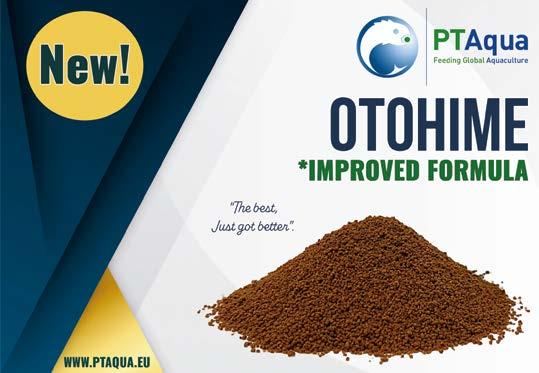
This year’s Aquaculture Congress, held from 28 June in Athens, promises to be a groundbreaking showcase of the latest advancements in aquaculture technology. We are showcasing here some of the innovative products that will be exhibited at the event. Be sure to visit our booth 22 to meet our team and learn more about our contributions to this field.
HelNet
HelNet is a leading Greek netting manufacturing company serving the aquaculture market with top quality products, such as net-cages, anti-predator nets, shade nets, etc. Their main activities also include the servicing of the used nets (washing, repairing & anti-fouling treatment). HelNet was founded in 2004 and its activities are the result of synergy of its founders:
• The large experience in the use of synthetic threads, framed with scientific training.
• Twenty years of continuous activity with studies and manufactures of special nets on sensitive fields as of fish farming.
In the beginning of 2014 HelNet s.a. was relocated to its new premises at the 68th km of the N.R. Athens -Lamia. The contemporary installations were constructed from scratch to improve the company’s functionality

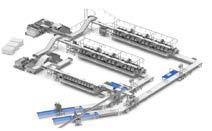

from 120 to 250 mm in length (species-dependant, approximately 20-150 grams), supporting up to three vaccines simultaneously, with vaccine doses from 0,025 to 0,1 ml. After vaccination, the fish can be sorted into three different sizes, which can positively impact FCR, growth, and commercialisation. A separate exit for rejected/misplaced fish ensures that these will be treated safely and effectively.
NFT machines are designed to handle large volumes of fish efficiently. Their capacity of 9,000 fish per hour can be further enhanced by pair connections, doubling it to 18,000 fish per hour. Their design allows for easy operation by a small, specialised team, both indoors and on mobile platforms in various aquatic environments. For more information, please contact the manufacturer or the specialised distributors.

Fixed and Portable Camera Systems by AquaManager
Introducing aquaManager’s cutting-edge feeding cameras, designed to revolutionise aquaculture management with unparalleled flexibility and efficiency. Our cameras come in two distinct options: a system of integrated cameras and portable units, catering to a wide range of operational needs.
The portable feeding cameras are engineered for effortless mobility, allowing you to swiftly deploy and reposition them across various cages as needed. This adaptability ensures that you can monitor different feeding zones without the hassle of a fixed installation. Ideal for operations seeking a low-cost yet highly effective solution, these portable cameras are perfect for optimising feeding practices across your aquaculture setup.
What sets our portable cameras apart is their user-friendly design and minimal maintenance requirements. With aquaManager’s portable feeding cameras, you can enjoy the peace of mind that comes with reliable performance and reduced upkeep, allowing you to focus on what matters most – the health and growth of your aquatic stock. Our system of integrated cameras offers a comprehensive monitoring solution for larger or more permanent setups. These cameras are strategically positioned to provide continuous, real-time insights into feeding behaviours, ensuring that feed distribution is efficient and waste is minimised. By utilising our integrated camera system, you can enhance feed management, reduce costs, and improve overall production outcomes.
Both our portable and system feeding cameras are equipped with advanced features to deliver high-quality footage and data. This enables precise monitoring and analysis, empowering you to make informed decisions that boost productivity and sustainability.
Whether you need the versatility of portable units or the thoroughness of an integrated system, our cameras are designed to meet your specific needs, ensuring optimal feeding practices and exceptional results. Discover the future of aquaculture management with aquaManager’s innovative feeding cameras.
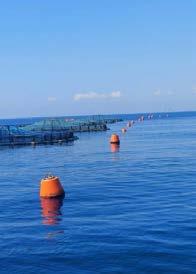
Precision Aquaculture Technologies by Innovasea Fish farms face numerous challenges, including rising feed and energy costs, environmental threats, and production inefficiencies. Innovasea’s precision aquaculture technologies offer solutions by allowing operators to monitor, manage, and control their operations using reliable real-time data. This leads to better decision-making, increased profits, and enhanced sustainability.
Modern fish farming is shifting towards data-driven decisionmaking instead of relying on past practices or intuition. By adopting new technologies, farmers can save money, reduce fish mortality, and improve efficiency. Innovasea’s integrated solutions, which include environmental sensors, stereoscopic biomass cameras, high-resolution feeding management cameras, artificial intelligence, and cloud computing, provide comprehensive insights into farm operations. These tools help measure oxygen levels, accurately estimate biomass, and reduce feeding costs.
The solutions are scalable, enabling the monitoring of individual fish pens or entire farms, leading to healthier fish, better production, and more efficient operations. The RealFishPro platform serves as the gateway to these technologies. Data from environmental sensors, widely used by salmon farmers in Norway, Chile, Canada, and Scotland, helps predict growth performance and plan feedings. BiomassPRO camera data is shared in Farm360 to improve biomass estimates and optimize feeding, delivering better growth forecasts. AquaEyes feeding tracking cameras and optimization software, accessible from Farm360, consolidate all data in one place, facilitating informed decision-making.

With over 20 years of

in
customised insurance solutions designed specifically for the aquaculture industry. Their extensive experience enables them to grasp the distinctive risks and complexities inherent in aquaculture operations, empowering them to craft insurance products that deliver comprehensive coverage and assurance to businesses in this sector.
Their aquaculture insurance product offerings include:
Stock Mortality Insurance: Their policies offer protection against the loss of aquatic livestock due to disease outbreaks, adverse environmental conditions, and other unforeseen events. With coverage tailored to the specific species and size of your stock, you can rest assured that your investment is safeguarded against unexpected losses.
Property Insurance: They provide coverage for aquaculture facilities, including buildings, equipment, and infrastructure. This insurance protects against risks such as fire, theft, vandalism, and natural disasters, ensuring that your operation remains financially secure in the event of property damage or loss.
Liability Insurance: They offer liability coverage to protect aquaculture businesses from third-party claims of bodily injury, property damage, and other liabilities arising from their operations. Their policies provide comprehensive protection against legal expenses and settlement costs, helping to safeguard your business reputation and financial assets.
Business Interruption Insurance: In the event of a covered loss that disrupts your aquaculture operations, their business interruption insurance provides financial compensation for lost income and ongoing expenses. This coverage helps mitigate the financial impact of temporary closures or production delays, allowing you to maintain business continuity during challenging times.
Credit Insurance: Credit insurance safeguards businesses against non-payment risks from customers, ensuring financial stability amidst uncertain economic conditions. Our comprehensive credit insurance solutions protect against defaults, insolvency, and bad debts, facilitating compliance with financial obligations and mitigating the impact of credit-related losses on business operations.
At Synthesis Insurance Brokers, they understand the importance of tailored insurance solutions that meet the specific needs of aquaculture businesses. Their team of experts is dedicated to providing personalised service, proactive risk management advice, and responsive claims support to protect investment and achieve long-term success in the aquaculture industry.

The Opti.4C Pellet Doser is ideal for feeding crustaceans such as lobsters, shrimp and other marine organisms. Thanks to a built-in rotary valve, the feed can be metered out and distributed in the tank via a rotating spreader disc. The spreading radius can be controlled at any time via the speed of the rotating discs, and run-time controlled feeding is possible at any time thanks to Weda’s own Excellent 4PX Fish computer program.
Of course, the Opti.4C Pellet Doser can be used for multiphase feeding as well as for predefined feeding curves when the amount of feed increases in growing animals.
The spreading radius can be changed via the speed of the spreading discs and can distribute a maximum of 21 kg/h at a feed density of 0.7 kg/l.
· For the feeding of crustaceans
· With rotary valve
· Rotating spreader disc
· Runtime-controlled feeding
· Controllable spreading radius
· Multiphase feeding and dosing out according to feed curve possible
· Controllable with Excellent 4PX Fish https://fish.weda.de http://myaqua.info/Gqrb
Designed by Brimmond in conjunction with the aquaculture industry, for the aquaculture industry, the NetJet™ 350D is a high-pressure pump unit for the safe and reliable cleaning of offshore aquaculture nets.
Brimmond is the first company in the UK to offer a full 360° manufacture, rental and support package for high-pressure net cleaning pumps for the offshore aquaculture sector.
• User-friendly net cleaning
Flow and pressure are both easily adjustable
• 4-point lifting frame ensures safe and easy relocation. Fully controllable using radio remote control or a local 9” LED control panel
• Integrated 290L stainless steel fuel tank
Sound attenuating foam www.brimmond.com http://myaqua.info/Ifaq


Fish Farm Feeder (FFF) announced a new product in its portfolio – a propeller pump. To ease maintenance, handling, and to improve efficiency of existing propeller pumps, the pump stand, made of HDPE, is as well used to conduct the pumped water up to its new elevation level. The shaft line and propeller can be extracted as one piece out of the stand.
Propeller pumps are well known and widely used in circumstances where high flow and low elevation are required.
The HDPE stand is easy to install, offers optimal hydraulic conditions including low submergences possibilities and is virtually indestructible.
Separation between water conduction pipe and shaft line makes the later much lighter than in traditional propeller pumps. Therefore, handling and maintenance are much easier.
www.fishfarmfeeder.com http://myaqua.info/qACe


An extensive collaborative project between Norwegian salmon producer Hofseth, dataanalysis company Manolin and feed producer Cargill showed that data-driven delousing strategies led to major improvements in trout production.
Hofseth Aqua AS operates four R&D permits for Cargill Aqua Nutrition where feed concepts for rainbow trout are being developed. The permits are located in Storfjorden east of Ålesund in production area five in Norway.
From 2022 to 2023, the project achieved significant improvements across various operational metrics. There was a 16 percent reduction in mechanical delousing treatments and a substantial 52 percent decrease in bathing delousing treatments, demonstrating enhanced efficiency in pest management. Remarkably, the project also saw a 70 percent reduction in treatment-related mortality, indicating improved animal welfare and treatment protocols. Additionally, the project managed to reduce starvation days by 26 percent, further contributing to the overall health and productivity of the stock. These operational efficiencies translated into a significant financial impact, with an estimated increase in revenue of approximately 50 million NOK.
Dealing with the lice challenge at these locations has been demanding, and attempts have been made over time to optimise smolt production, find new locations and apply new technical equipment. Area and site analyses have contributed to a good structure for determining locations and
positioning of facilities to ensure optimal farming conditions. Nevertheless, in 2022, it was recognised that there was a potential to improve management of sea lice.
Therefore, Hofseth and Cargill began a project to reduce the number of delousing and reduce fish mortality.
“It all started with the lice, where did they come from? How do we succeed with our delousing? How could we establish a strategy and have performance targets that were easy to communicate and apply for the entire organisation?”, says Anders Marthinussen, Cargill’s business developer for fish health in Norway.
The Norwegian Institute of Marine Research’s model for the spread of salmon lice was amongst the starting points applied to gain a basic understanding of how various sites contribute to lice production in the fjord system throughout the year.
The lice map showed that even with average values below the action thresholds, there were periods of high lice pressure in the fjord system.
“This knowledge was used to create an annual wheel for a lice strategy, based on preventative measures, control measures and treatment measures that could be performed with available tools. At the same time, the need to document
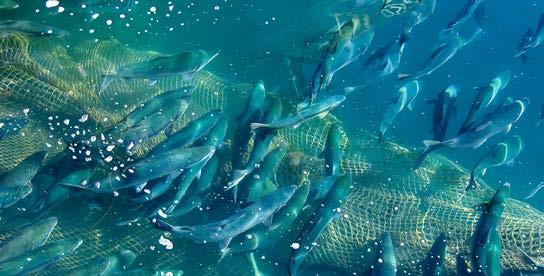
both direct and indirect effects of the strategy became clear, and an analysis of operational data would be needed to be able to correct the course and possibly initiate change in the strategy,” says Marthinussen.
Hofseth and Cargill therefore teamed up with Manolin, a company that develops basis for data-driven decisions. In a previous project, Manolin and Cargill reviewed a large number of delousing operations and developed a method for auditing delousing results. This experience was now applied to conduct an analysis of the Hofseth sites.
“In this project we developed a method that showed treatment results at site level, as well as which impact choice of delousing method had on a number of productivity parameters for various fish groups. From this, we learned that in order to succeed, the focus had to shift from focusing on thresholds for taking action at the site, to establishing thresholds for lice levels in the fjord system,” says Marthinussen.
An overall index for fish health, mortality and lice levels was established and revised on a weekly basis to provide a status of the entire fjord system. Each individual delousing was audited after the last day of treatment, then again after 30 days and after 90 days.
“What was perhaps immediately perceived as a good delousing could fall through if, for example, increasing mortality was observed afterwards. This enabled us to identify critical periods and weeks when it was important to implement measures and to highlight the effect of these,” says Anders Marthinussen.
The annual cycle of the delousing strategy was then followed
up with weekly revisions of the levels of lice pressure.
Treatment results were ranked as less good, average, or good, which provided a basis for identifying the positive results and learnings from the less positive ones. Prioritisation of actions taken on various sites was determined based on what was the best strategy overall.
“This project shows that analysis of structured data can reduce the lice challenge by enabling the right actions to be taken at the right time. When we share the results from this project, it is in the hope that other fish farmers can achieve similar improvements with a similar approach, and thereby contribute to meeting the overall health and welfare challenges facing the salmon industry,” says Sigurd Tonheim, Strategic Marketing and Technology Lead at Cargill Aqua Nutrition in Norway.
“This project not only demonstrates the power of targeted strategies and data-driven approaches, but also establishes a new standard for sustainable aquaculture practices. The experience here can be a great example of what’s possible and illustrates the potential when aquaculture expertise works with data intelligence,” says Tony Chen, co-founder of Manolin.
“In Hofseth, we are responsible and accountable for ensuring the health and welfare of our fish. This project shows that better decisions can be made from analyzing structured data in order improve our sea lice management,” says Sven Amund Skotheim, fish health manager of Hofseth Aqua.
Hofseth, Cargill and Manolin will continue cooperating on this work also in 2024 and expect further improvements in fish health, fish welfare and increased productivity.


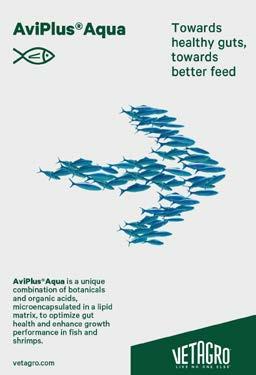
2024 June
18-20
Seagriculture EU 2024 Torshavn, Faroe Island https://seagriculture.eu 19-21
Aquaculture Taiwan 2024 Taipei, Taiwan www.aquaculturetaiwan.com 24-26
4th Edition of World Aquaculture and Fisheries Conference Paris, France www.worldaquacultureconference.com

28-29
Aquaculture Congress 2024 Athens, Greece https://aquaculture-congress.com
2024 July 2-5
Asia-Pacific Aquaculture 2024 Surabaya, Indonesia www.was.org/meeting/code/APA2024 17-19
IndoFisheries 2024 Expo & Forum Jakarta, Indonesia https://indofisheries.id
2024 August 21-22
Aqua 2024 Copenhagen, Denmark https://aquaeas.org

2024 September 3-5
Global Shrimp Forum Ultrecht, Netherlands www.shrimp-forum.com
11-12
Seagriculture USA 2024 Alaska, USA https://seagriculture-usa.com
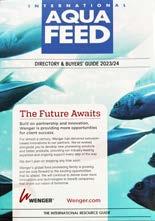
11-13
10th Int'l Aquaculture & Fisheries
Expo Taiwan Taipei, Taiwan www.taiwanagriweek.com
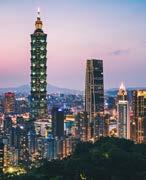
21-22
AquaH
Birmingham, United Kingdom https://aquah.co.uk
24-27
Latin America & Caribbean Aquaculture 2024 Medellin, Colombia www.was.org
2024 October 2-3
VIV Africa 2024 Kigali, Africa https://www.vivafrica.nl
10-12
Future Fish Eurasia Izmir, Turkiye https://eurasiafairs.com
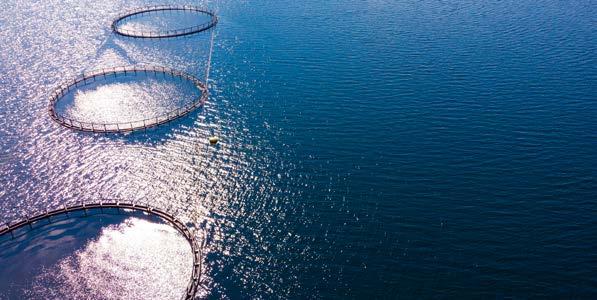



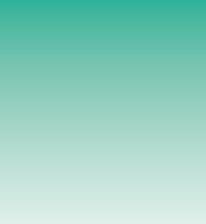


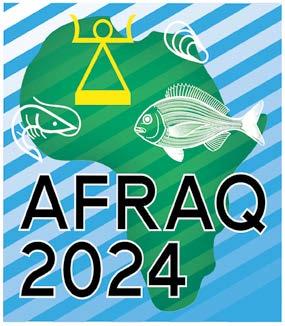
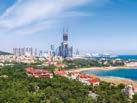





HavExpo 2024, the international Norwegian event for aquaculture and fisheries, concluded after three B2B days with a record-breaking total of 14,700 visitors. Held on May 6-8, 2024, in Bergen, Norway, the biannual show contained the latest in technology and fish farming, was the place to be for fisheries and aquaculture professionals, acting as the networking hub you wouldn’t want to miss for those technology experts.
Alongside a record-breaking amount of sunshine the three days of HavExpo, the show experienced an incredible footfall, with 4153 visitors on the Monday, 7467 on Tuesday and 3132 on Wednesday. This was a record number for the show, receiving
more visitors than they had the previous years.
To open the show State Secretary Even Sagebakken and County Mayor Jon Askeland offered a warm welcome to all the exhibitors and attendees. Following this warm welcome, conferences took place in halls C and D every 15 minutes throughout the first two days.
An important aspect for HavExpo is sharing knowledge, emphasising the important topics of the industries and engaging with the local and international sectors of aquaculture through conferences along with the current topics of the industry.
Throughout the three days, a total of over 100 seminars took
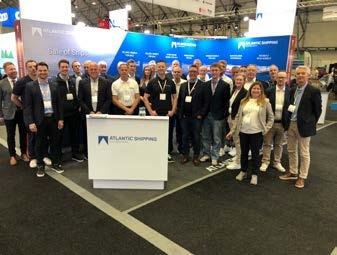
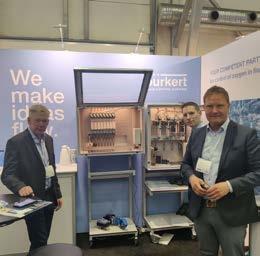
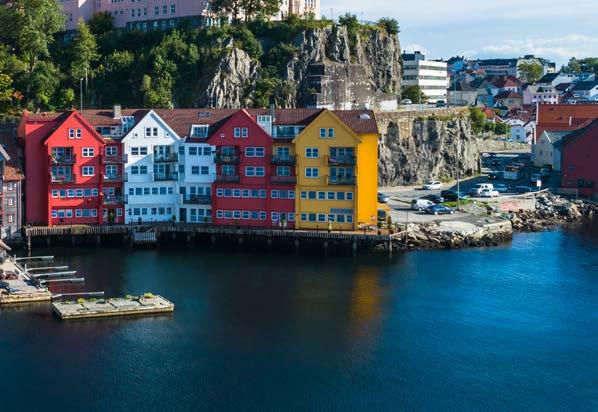

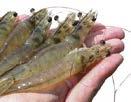






With over 150 years of combined experience, we help you find your individual packaging solution. Over the years, we have delivered highly versatile and innovative machines operating at high production rates for the international fish food industry. In addition, we help you meet global environmental challenges without compromising on performance.


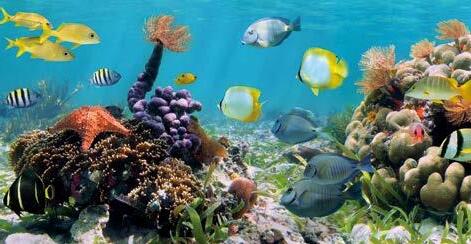


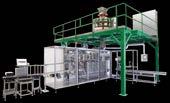

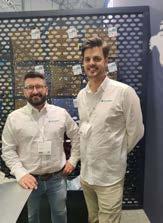
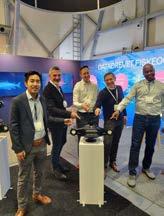


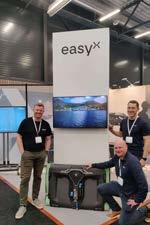
place. These conferences presented innovative solutions and the Latvian-Norwegian seminar emphasised international cooperation within the aquaculture industry. International Aquafeed had the pleasure to attend HavExpo and met many experts there. One such person was John Arne Breivik, General Manager of Stingray Marine Solutions AS, who had an eye-catching twostory building for a stand, that Costa Skotidas, International Aquafeed’s Content and Development Manager, got to speak to. Breivik informed us how important and relevant their company is to the challenges in the Norwegian market regarding salmon and lice calling it “paramount” and how Stingray remains prominent in the industry. “We can reduce the mortality, increase superior grade and increase the average weight before harvesting,” says Breivik.
We also had the chance to speak to the Head of Danish Export for Fish Tech, Martin Winkel Lilleoere, about the show and Danish companies with aquaculture: “At HavExpo 2024, we predominantly saw that the visitor profile was from the aquaculture industry. As Danish companies have a strong positioning in the aquaculture sector, many of the Danish exhibitors enjoyed visits from key decision-makers from various companies focusing on the aquaculture industry.”
The CEO of Waive, Peter Skaugvold, who was exhibiting at the show took a moment to talk to Costa as well, explaining how Waive differs from other companies through their camera-based solutions as the sonar they use shows the entire cage rather than only the health of the fish within the cage.
Imenco Aqua’s General Manager, Tommy Storsveen, an

 Imenco Aqua stand with General Manager, Tommy Storsveen (right) and Costa Skotidas (left).
The Brynsløkken AS team with Ivar Ohnstad (left) and Alexander Lersbryggen (right).
Biorigin team members Bogi Nielsen (left), the Global Key Account Manager, and Joao Koch (right), the Technical Manager
OK Marine and Samba Marin boat BBQ party onboard the Flekkerøy as an entertainer plays the guitar in the background, capturing everyone’s attention.
Piscada stand with Costa Skoitdas (left) and CEO Torgeir Pedersen (right).
Aquabyte team with their new showcased item that they unveiled, The Hammerhead camera. Its key features include selfcleaning lenses, a compact size (just compare it to the iPhone!), and new sensors for oxygen and salinity.
Imenco Aqua stand with General Manager, Tommy Storsveen (right) and Costa Skotidas (left).
The Brynsløkken AS team with Ivar Ohnstad (left) and Alexander Lersbryggen (right).
Biorigin team members Bogi Nielsen (left), the Global Key Account Manager, and Joao Koch (right), the Technical Manager
OK Marine and Samba Marin boat BBQ party onboard the Flekkerøy as an entertainer plays the guitar in the background, capturing everyone’s attention.
Piscada stand with Costa Skoitdas (left) and CEO Torgeir Pedersen (right).
Aquabyte team with their new showcased item that they unveiled, The Hammerhead camera. Its key features include selfcleaning lenses, a compact size (just compare it to the iPhone!), and new sensors for oxygen and salinity.
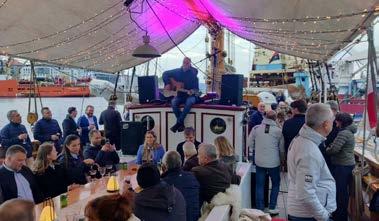
exhibitor dedicated some time to show us the machinery they exhibited, which was their “feeding equipment that featured robotic feeding combined with automates”. This machine allows for either feeding with robotics or refilling automatically which makes the process fully automatic which keeps the water and surrounding area clean, uncontaminated and the water quality to remain good in tanks.
Skotidas was able to spend some time with Innovative Director of AKVA Group, Arnstein Hosaas. “We have a lot of different projects coming, a combination of different thing. Our main goal is to try to enable more sustainable farming with better fish welfare.”
The CEO and Founder of Probot, Mikkel Pedersen, mentioned how their showcased products are unique not only at HavExpo but for the delegates of the show: “Our product
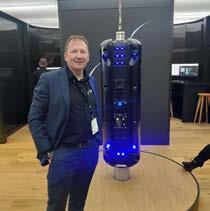
of Stingray Marine Solutions AS, John Arne
technology
CEO of Waive AS, Peter Skaugvold
Costa

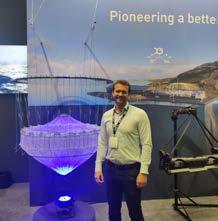
works like a robotic vacuum cleaner for the fish net pens. Our solution is for clean fish net pens without the use of any chemicals, high pressure cleaning or any brush solutions. This means you can have clean nets without causing stress for the salmon.”
To round off the days with some social networking, HavExpo offered multiple opportunities for attendees to grow their connections. There were multiple fun and relaxing moments for the delegates to connect with new potential partners and reconnect with old ones too.
HavExpo 2024 was a successful and extraordinary event that were thankful to attend. Remaining biannual, the next show dates for HavExpo have been announced to take place on May 5 – 7, 2026, in Bergen, Norway. We hope to see you there and to stay updated, keep an eye on their website at www.havexpo.no/en/.

The Hexacage team that our team member Costa Skotidas met with: on the left is Ole Bennaes, the Partner and COO of Hexacage, in the centre is Partner and CTO John-Arne Olsen and on the right is Senior Engineer Geir A. Havreberg. Hexacage is a company that consists of closed steel cages surrounding a service cell. Each cage is operating isolated. The service cell is used for common infrastructure and machinery.
Henrik R. Thorbjørnsen

 At the Steen-Hansen boat party on the MS LOYAL.
Arnstein Hosaas, Innovation Director at AKVA Group
CEO
Breivik, showcasing their
‘The Stongray System’. The system kills salmon lice with laser while also monitoring health of farmed fish 24/7.
(left) with
Skotidas, showcasing their newest innovation the SeapiX 3D Multibeam Sonar.
John
(left), the Head of Sales, and Erlend Waatevik (right), Senior Consultant, at the PT Aqua stand
Roy Høiås, Partner/CEO and Owner Lighthouse Finance AS (left) and Heidi Leikanger, Senior Executive at Lighthouse Finance (right).
At the Steen-Hansen boat party on the MS LOYAL.
Arnstein Hosaas, Innovation Director at AKVA Group
CEO
Breivik, showcasing their
‘The Stongray System’. The system kills salmon lice with laser while also monitoring health of farmed fish 24/7.
(left) with
Skotidas, showcasing their newest innovation the SeapiX 3D Multibeam Sonar.
John
(left), the Head of Sales, and Erlend Waatevik (right), Senior Consultant, at the PT Aqua stand
Roy Høiås, Partner/CEO and Owner Lighthouse Finance AS (left) and Heidi Leikanger, Senior Executive at Lighthouse Finance (right).





Megaron Athens International Conference Centre
Building on the success of our previous two Congresses in 2018 and 2022, the Aquaculture Congress has emerged as a cornerstone institution in the industry. The primary goal of the 2024 event is to guide the definition of a resilient future for aquaculture in Greece, the Mediterranean, Arab countries, and beyond.
The Aquaculture Congress 2024 “Defining a Resilient Future”, is organized by AMBIO S.A. (https://ambio.gr) with the support of Hellenic Organization of Aquaculture Producers - HAPO (https://fishfromgreece.com), will take place on 28-29 June 2024, at the Athens International Conference Centre.

Key objectives include addressing investment challenges, promoting sustainable practices to mitigate the effects of climate change, strengthening competitiveness, encouraging innovation through advanced technologies, developing new products, investigating global demand projections for aquaculture products, and fostering international cooperation and partnerships. With an expected participation of 750 delegates from Cyprus, the Arab countries, Tunisia, Egypt, Norway, Denmark, Italy, Germany, France, Spain, Israel, Belgium and Portugal, the congress aims to attract key industry stakeholders, ensuring a collaborative and impactful event.



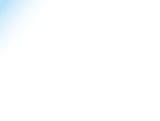
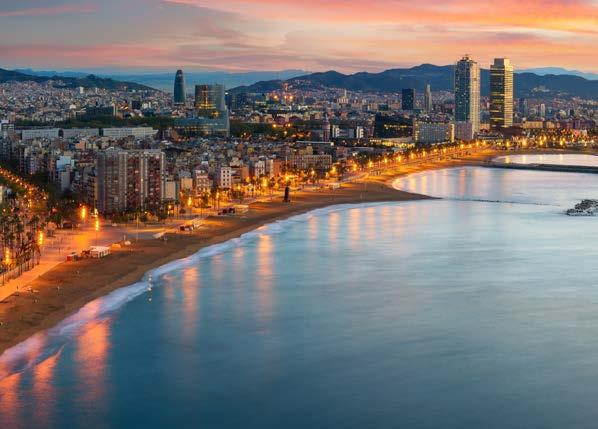 by David Harvey and Costa Skotidas, International Aquafeed, UK
by David Harvey and Costa Skotidas, International Aquafeed, UK
Seafood Expo Global/Seafood Processing Global breaks records with more than 35,000 Seafood Professionals attending it this year, making it the largest edition in the event’s history.
With 51,248 net square meters of exhibit space, the 30th edition welcomed a record 2244 exhibiting companies from 87 countries from around the world to meet in-person to conduct business and learn about the latest industry trends. Diversified Communications, the organiser of the event, estimates that more than 35,000 buyers and suppliers from the global seafood industry came to the event for its third year in Barcelona. With the expansion into Hall 1, this year’s event occupied Halls 1, 2, 3, 4, 5 and the Galleria (between Halls 4 and 5) at the Gran Via venue. The economic impact for the city is estimated to be more than 156 million Euros.

“It was exciting to feel the buzz throughout the exhibit halls,” said Wynter Courmont, Vice President of Seafood at Diversified Communications USA. “The industry relies on this event to reach their annual business goals in the global market. Both exhibitors and visitors utilise this platform as a place to meet with current customers, find new ones, forge customer relationships and expand their knowledge of the industry.”
Seafood Expo Global exhibitors showcased the most recent innovation in seafood -– fresh, frozen, canned, value-added, processed and packaged – such as seafood sweets such as salmon candy and shrimp lollipops, fish chips, pickled wakame seaweed or seafood spreads. Seafood Processing Global brought together companies representing every aspect of seafood processing, including packaging material and machinery, equipment and


Ms.Haidee Wang
Tel: +86 138 1775 2961
E-mail: haidee.wang@globusevents.com
Mr.Philippe Verstuyft (based in Europe)
Tel: +31 6 1517 3564
E-mail: philippe@vnueurope.com
Ms.Chanitprapa Menasuta (based in Thailand)
Tel: +66 (0) 8 1801 7464
E-mail: chanitprapa@vnuasiapacific.com
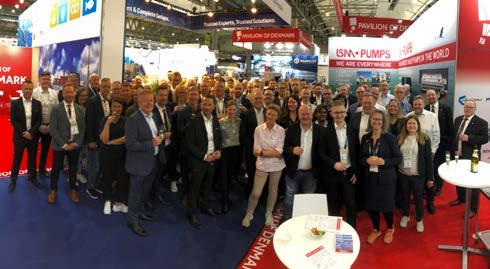
supplies for refrigeration and freezing, primary and secondary processing equipment, hygiene control and sanitation, and quality assurance services.
Evy Vikene, Commercial Director, Skretting Group who has attended the event twice before said, “The event is going well so far. We are here to connect with our customers and potential customers and see what is happening in the industry”
This year’s event has seen an increase in companies presenting aquaculture technologies and equipment and logistical companies, as well as high-volume buyers from the retail, foodservice and distribution taking part in the event’s Key Buyer program, including AEON Topvalu Co., Ltd (Japan),

Aldi (Germany, Australia, Austria, France, Spain, United Kingdom), Bidfood (Australia, Latvia, Estonia, Netherlands, Hong Kong, United Kingdom, Spain), Brakes/Constellation (United Kingdom), Colruyt (Belgium), Coop (United Kingdom, Italy, Denmark, Switzerland), Costco (United States, Canada, Mexico, Spain, United Kingdom), Delhaize (Belgium), Elior (France, United Kingdom), Emart Inc. (South Korea), Galati Group (Australia), Giant Eagle (United States), HelloFresh (United Kingdom, Germany, Spain), IKEA (Germany, Sweden), Lidl (German, Spain, Switzerland, United Kingdom, Greece), Lotte Mart (South Korea), Metro (France, Serbia, North Czechia, Moldova, Germany, Hong Kong, Italy), Qatar Airways (Qatar), Royal Caribbean Group (United States), Snowfox Group (United
 Ole Chr Wroldsen, Creative Structural Design & Analysis at Aker Solutions who deliver integrated solutions, products and services to the global energy industry. They enable low-carbon oil and gas production and develop renewable solutions to meet future energy needs.
Vanessa Mandt, Harald Ehren and Regina Handl from BAADER who create value-adding processing solutions that are safe, sustainable, holistic and precise, from the efficient and gentle handling of raw resources to finished and packed food products.
Ole Chr Wroldsen, Creative Structural Design & Analysis at Aker Solutions who deliver integrated solutions, products and services to the global energy industry. They enable low-carbon oil and gas production and develop renewable solutions to meet future energy needs.
Vanessa Mandt, Harald Ehren and Regina Handl from BAADER who create value-adding processing solutions that are safe, sustainable, holistic and precise, from the efficient and gentle handling of raw resources to finished and packed food products.

Costa Skotidas with Salim Al-Ma’mari, Group Investments Director, Fisheries Development Oman (FDO) . FDO is the investment and development arm of the Oman Investment Authority that is responsible for developing the seafood, fisheries and aquaculture industry. Currently they have three business lines – aquaculture, commercial fishing, and value added products. Within aquaculture, they offer products and services in finfish and shrimp. In commercial fishing, they do small and large Pelagic. Within their value added products portfolio, they have a new fish canning facility offering canned tuna and sardines.
Kingdom), Sysco (United Kingdom, Italy, France, Hong Kong) and more.
One of the exhibitors, Jorge Rodrigues, Export Director of Guy Cotton commented, “This year , we are mainly exhibiting our new range of women’s cut. It is Inspired by the Isomax jacket – in pink and yellow and it is produced in France. We have had a lot of demand from women in the sector for a design exclusive to them”.
Bashkim Mustafa, Sales Manager, Baader commented, “We are exhibiting our solutions on demand line. This is also where our minced line solutions come into play using which you can get the most out of the fish. The machine we are exhibiting is called Baader Refiner and it works on our Baadering technology. The main advantage of this technology is that you can keep the structure of the meat and still separate out the bones.”
Sustainability, aquaculture, labour issues, artificial intelligence and traceability were some of the most

in manufacturing synthetic fibre rope and netting solutions for the aquaculture industry
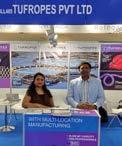

Evy Vikene, Commercial Director of Skretting, a global leader in providing innovative and sustainable nutritional solutions and services for the aquaculture industry.
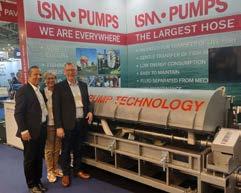
The strong presence of HAPO was strengthened this year with the visit of Deputy Minister Stavros Keletsis and Secretary General Georgios Stratakos of the Ministry of Rural Development & Food (YPAAT). Accompanied by the Board of Directors of HAPO and Mr. Pantelis Gassiou, Counsellor of the Economic and Financial Services A of the Greek Embassy in Madrid and Mr. Andreas Pappas, President of the Spanish-Hellenic Chamber, visited and talked with the members of HAPO and other Greek exhibitors. With its longstanding presence in international exhibitions, HAPO proves the extrovert and export orientation of its 22 Members.

prominent topics discussed at the event’s three-day conference program.
The prestigious Seafood Excellence Global Awards recognised the best products represented at the Expo with French companies Parcs Saint Kerber and Algolesko winning the top prizes. Parcs Saint Kerber won the Best Retail Product for its Oysters Trio Saint Kerber, which features four each of three of the company’s iconic oysters in a single retail box. Algolesko won the grand prize for Best HORECA (hotel/restaurant/catering) Product for its Wakame Pickles, which offers a unique new way for chefs to present seaweed on the menu.
Ben Perry, Head of Sales, Ace Aquatec said, “This year we are exhibiting on three primary areas that are aquaculture focussed. Our Biomass estimation camera – which was launched last year,

Christian Bisgaard, Mike Simonsen and Niels F V Carlsen from Oestergaard. The AceAquatec team

Jorge Rodrigues, Export Director from Guy Cotten who have been creating tough and waterproof commercial fishing rain gear and professional farming rainwear for over 60 years.

Nilsson, Selin Akdogan, Trevor Wastell,
and
The Pisces line of equipment includes machines for marine, freshwater and aquaculture species. Installations in North, Central and South America, Europe, the Middle East, Southeast Asia, Australia and New Zealand, provide unique international experience of the fish processing industry both in plant and onboard.

our processors and thirds, our targeted acoustics around seal deterrent. It’s my first time here and it’s a great show!”
For the first time, the Expo hosted a reception and networking event Connecting Women in Seafood, which provided attendees a space to connect, share experiences and expand their professional network with a goal in mind: create a more inclusive and thriving seafood industry.
For its third year in a row, Seafood Expo Global/Seafood Processing Global partnered with Barcelona Food Bank, Banc dels Aliments to collect the seafood products donated by exhibitors. Volunteers walked around the exhibit halls to gather donated seafood products in refrigerated vehicles.
The next Seafood Expo Global/Seafood Processing Global will be held in Barcelona on 6-8 May 2025.
Aarti Choubal and Imran Shaikh from Tufropes. Tufropes is a company that specialise Jonny Mathew Wastell Ludo Zaidi of Pisces Fish Machinery.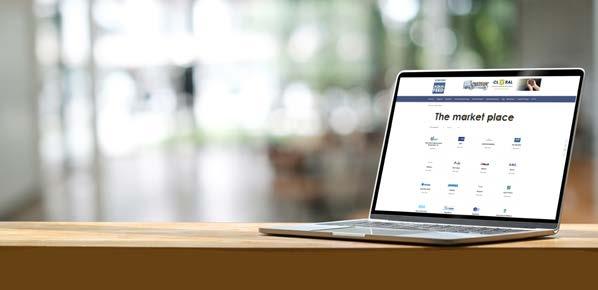
Faivre
+ 33 3 81 84 01 32
www.faivre.fr
PROFILE: myaqua.info/JEzZ
Kaeser Kompressoren
+49 9561 6400
www.kaeser.com
PROFILE: myaqua.info/okuN
DSM-Firmenich
+43 2782 8030 www.dsm.com
PROFILE: myaqua.info/uJDB
Dr. Eckel
+49 2636 9749 0 www.dr-eckel.de
PROFILE:myaqua.info/PRdreckel
Dr. Eckel Animal Nutrition: This is high-quality, modern animal nutrition made in Germany. Our company was founded by Dr agr. Antje Eckel in 1994. The former start-up has developed into an international hidden champion in the field of innovative feed additives for livestock and aquaculture.
We are regarded as a pioneer in the industry. Our products, distributed worldwide, combine commercially successful animal nutrition with animal welfare. Repeatedly acclaimed by the research sector and industry, our products make a major contribution to sustainable food production. myaqua.info/PRdreckel
Jefo
+1 450 799 2000
https://jefo.ca
PROFILE: myaqua.info/mQBf
Liptosa
+34 902 157711
www.liptosa.com
PROFILE: myaqua.info/iZqf
PAYPER
+34 937 216 040
www.payper.com
PROFILE: myaqua.info/payper
TSC Silos
+31 543 473979
www.tsc-silos.com
PROFILE: myaqua.info/YZlV
Vigan Enginnering
+32 67 89 50 41
www.vigan.com
PROFILE: myaqua.info/aXKo
Inteqnion
+31 543 49 44 66
www.inteqnion.com
PROFILE: myaqua.info/mSNu
Bühler AG
+41 71 955 11 11
www.buhlergroup.com
PROFILE: myaqua.info/qREy
FAMSUN +86 514 85828888 www.famsungroup.com
PROFILE: myaqua.info/Esjj
Wenger Manufacturing
+1 785-284-2133
www.wenger.com
PROFILE: myaqua.info/plVJ
PAYPER
+34 937 216 040 www.payper.com
PROFILE: myaqua.info/payper
myaqua.info/JEzZ
Tapco Inc
314 739 9191 www.tapcoinc.com
myaqua.info/rCyw
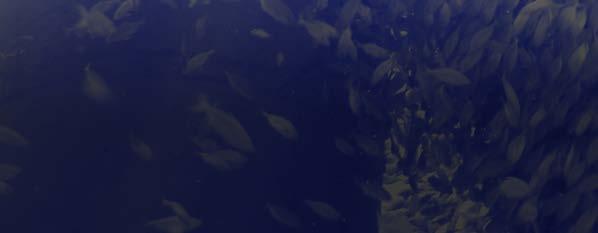
4B Braime +44 113 246 1800 www.go4b.com
PROFILE: myaqua.info/vPJh
DSM-Firmenich +43 2782 8030 www.dsm.com
PROFILE: myaqua.info/uJDB
ExtruTech
785 284 2153
www.extru-techinc.com
PROFILE: myaqua.info/DhbW
Almex
+31 575 572666
www.almex.nl
PROFILE: myaqua.info/zjHK
Buhler AG
+41 71 955 11 11
www.buhlergroup.com
PROFILE: myaqua.info/qREy
Ottevanger
+31 79 593 22 21
www.ottevanger.com
PROFILE: myaqua.info/prYd
Wenger Manufacturing
+1 785-284-2133
www.wenger.com
PROFILE: myaqua.info/plVJ
Zheng Chang
+86 2164184200
www.zhengchang.com
PROFILE: myaqua.info/zQxZ
Adisseo +33 1 46 747104 www.adisseo.com
PROFILE: myaqua.info/iGee
Aller Aqua
+45 70 22 19 10
www.aller-aqua.com
PROFILE: myaqua.info/AnqC
Alltech
+44 1780 764512
www.alltechcoppens.com
PROFILE: myaqua.info/mTpk
GePro
+49 54415 925252
www.ge-pro.de
PROFILE: myaqua.info/UzqV
Throughout its 50 years in operation, GEPRO has made a name for itself as a reliable and successful industry player that can face challenges head on, and overcome them using innovative solutions.
GEPRO’s headquarters and main production site are located in Diepholz, Lower Saxony, in close proximity to Germany’s largest poultry production and processing plants. In addition to the headquarters in Diepholz, GEPRO has other locations around the world to ensure incredible service.
GEPRO’s goal is to always have their finger on the pulse of the market and to implement their customers’ requests and requirements in a timely manner.
At the same time, GEPRO are driven by ambition as they develop and produce the highest quality products from the best abattoir by products in the poultry industry. They only process Category III abattoir by products from poultry here. myaqua.info/UzqV
Jefo
+1 450 799 2000
https://jefo.ca
PROFILE: myaqua.info/mQBf
Liptosa
+34 902 15 77 11
www.liptoaqua.com
PROFILE: myaqua.info/iZqf
miXscience
+33 2 23 46 90 00
www.mixscience.eu
PROFILE:myaqua.info/mixscience
Phileo (Lesaffre animal care)
+33 3 20 81 61 00
www.lesaffre.fr
PROFILE: myaqua.info/vqCK
TekPro
+44 1692 403403
www.tekpro.com
PROFILE: myaqua.info/QcZG
Tietjen Verfahrenstechnik GmbH
+49 4106 6333 0
www.tietjen-original.com
PROFILE: myaqua.info/wiyw
Van Aarsen International
+31 475 579 444
www.aarsen.com
PROFILE: myaqua.info/sBGT
Founded in 1949, we are a developer, manufacturer, and supplier of high-quality machines, process lines, and complete solutions for feed production, worldwide. By innovating in not only technology but also in our overall communication and your experience with Van Aarsen, we aim to find the perfect fit solution for any project, challenge, or request you may have related to feed production machinery. We strive to do this by communicating with – and advising you throughout your entire journey with us as your manufacturer. But most importantly, we strive to be your long-term partner in optimizing your feed production. myaqua.info/sBGT
Fish counters
Faivre + 33 3 81 84 01 32
www.faivre.fr
PROFILE: myaqua.info/JEzZ
Fish Graders
Faivre + 33 3 81 84 01 32 www.faivre.fr
PROFILE: myaqua.info/JEzZ
Fish pumps
Hammermills
Faivre + 33 3 81 84 01 32
www.faivre.fr
PROFILE: myaqua.info/JEzZ
Dinnissen BV +31 77 467 3555 www.dinnissen.nl
PROFILE: myaqua.info/loTI
Tietjen Verfahrenstechnik GmbH +49 4106 6333 0 www.tietjen-original.com
PROFILE: myaqua.info/wiyw
Hydronix +44 1483 468900 www.hydronix.com
PROFILE: myaqua.info/FkMu
FAWEMA / The Packaging Group +49 22 63 716 0 www.fawema.com
PROFILE: myaqua.info/oeDC
Symrise https://aquafeed.symrise.com
PROFILE: myaqua.info/fEOD
IDAH +866 39 902701
www.idah.com
PROFILE: myaqua.info/eCVS
PTN +31 73 54 984 72 www.ptn.nl
PROFILE: myaqua.info/Zapi
Buhler AG +41 71 955 11 11 www.buhlergroup.com
PROFILE: myaqua.info/qREy
Dinnissen BV +31 77 467 3555
www.dinnissen.nl
PROFILE: myaqua.info/loTI
FAMSUN +86 514 87848880
www.muyang.com
PROFILE: myaqua.info/Esjj
Ottevanger +31 79 593 22 21 www.ottevanger.com
PROFILE: myaqua.info/prYd
Zheng Chang +86 2164184200 www.zhengchang.com
PROFILE: myaqua.info/zQxZ
IDAH +866 39 902701 www.idah.com
PROFILE: myaqua.info/eCVS
DSM-Firmenich +43 2782 8030
www.dsm.com
PROFILE: myaqua.info/uJDB

PAYPER
+34 937 216 040
www.payper.com

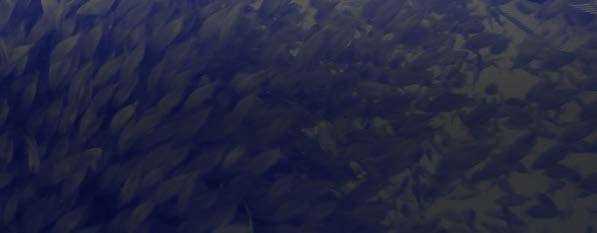
Fish Farm Feeder
+34 886 317 600
www.fishfarmfeeder.com
PROFILE: myaqua.info/PKBM
Aqua Ultraviolet
+1 952 296 3480
www.aquauv.com
PROFILE: myaqua.info/KbEj
Aqua Ultraviolet has designed solutions that provide cutting edge technology and efficiency to their users. They offer innovative new products striving to make technology simple for all of their customers, distributors, dealers and consumers alike. Life depends on water, and now more than ever, business does too. For over three decades Aqua Ultraviolet has been the premier manufacturer of ultraviolet sterilisers and bio-mechanical filtration. myaqua.info/KbEj
FAMSUN
+86 514 85828888
www.famsungroup.com
PROFILE: myaqua.info/Esjj
TSC Silos
+31 543 473979
www.tsc-silos.com
PROFILE: myaqua.info/YZlV
Dinnissen BV
+31 77 467 3555
www.dinnissen.nl
PROFILE: myaqua.info/loTI
PAYPER
+34 937 216 040
www.payper.com
PROFILE: myaqua.info/payper
Ottevanger
+31 79 593 22 21
www.ottevanger.com
PROFILE: myaqua.info/prYd
Leiber GmbH
+49 5461 93030
www.leibergmbh.de
PROFILE: myaqua.info/e/gTlw
Phileo (Lesaffre animal care)
+33 3 20 81 61 00
www.lesaffre.fr
PROFILE: myaqua.info/vqCK

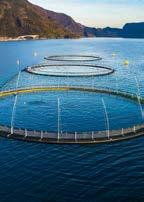


http://myaqua.info/qayv
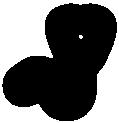










Dr Louise Buttle is an aquaculture professional with over 25 years’ experience in the industry. After completing a PhD at the University of Hull on the physiology of nitrogen excretion in the African catfish, Louise joined EWOS Cargill. Today, Louise is working in the Global Aqua team for dsm-firmenich with technical marketing and has commercial Global Key Account Responsibility in ANH Essential products. Louise has a strong passion for sustainable development of aquaculture and is leading the business roll-out of Sustell™ in the aquaculture industry.
You have a rich career in the industry, how did you get into this field? I started with my PhD in the African Catfish which at that time was considered the fish that was going to ‘solve the food problems of the Africa.’ It's an incredibly hardy fish but it's quite interesting from a physiological point of view because it has air breathing organs, meaning it can withstand a lot of different water quality conditions. I was really excited about aquaculture and I was lucky enough to get my first job with EWOS in their technology centre, where I had an amazing experience growing professionally for over 20 years, all over the world. I started off in Scotland and then as R&D Manager in Chile, then in Bergen, Norway with product development and sustianbility roles. I've been with the dsm-firmenich for five years now. work from a home office in the UK but my role is global, working closely with colleagues. It’s always great to connect with colleagues different parts of the Aquaculture world, but especially Norway and Chile.. Last week I was in Japan working with the aqua team and in November I was in Chile. That's where my energy is - working in the operating countries close to the customers.
Could you elaborate on the extension of Sustell platform to include sea bass and sea bream and how it contributes to ensuring an accurate footprint for marine fish producers?
Salmon has had a reputation for being a sustainability frontliner but we saw an opportunity to really extend the module in Sustell to marine fish, specifically sea bream, sea bass, and large trout grown in cages. It's quite new, just launched at the end of last year, so we’re really excited to be talking with customers in that space now. Everyone's on a sustainability journey, but it's important to take ownership for your own data when it comes to foot printing and environmental impact.
In recent years there's been a growing interest in alternative protein sources for aqua feed such as insect meal or single-cell proteins. What are your perspectives on the potential of these alternative ingredients in closing the protein gap in the aqua feed formulations?
One of the levers of sustainable aquaculture is sustainable raw materials. In the salmon industry, especially in Norway, there’s a very small raw material basket and makes us exposed to uncertainty in the raw material supply chain.
We recognise that there's limited resources of our standard raw materials, but if our industry is going to grow sustainably, we're going to need those novel alternative ingredients.
When it comes to proteins, there's some great candidates. Insect meals have had a great deal of funding. dsm-firmenech have a really exciting project called ‘Smart Protein’ which comes out of the expert centre Bioscience in Delft, Netherlands and we've reached a 70 percent protein target through natural strain selection.
With our latest LCA investigations, we think that we're going to reach a carbon footprint of less than one (potentially less). In terms of alternative raw materials, they need to be sustainable and there's many metrics you can define this with, from carbon footprint to areas like biodiversity, land use, water use. I think we're going to see more
scrutiny on those metrics going forward, especially considering the many companies who have signed up to science-based targets within 2030. It's a massive ambition, but how is it going to happen in reality?
In recent years, we've seen more people advocate for sustainability and responsible sourcing of raw materials. How do you think the industry is going to respond into this?
When it comes to transparency around raw material use, I think the salmon industry and the feed industry specifically, has done a very good job in terms of being open on raw material use, within the constraints of commercial perspective.
I think the industry is really good at discussing amongst themselves, but not so good at really communicating to the outside world. There is this gap between our internal knowledge, tracking, and monitoring of raw materials and how that's perceived on the outside world, and what sustainability means to our stakeholders. We've set a good track record but I think it still needs to be pushed further.
Raw materials sourcing is a significant aspect of aquafeed formulation. Could you shed some lights on how dsm-firmenich approaches a selection of raw materials to ensure both nutritional quality and sustainability in aquafeed production?
Dsm-firmenich have ambitions, with our products, supplies, micro ingredients, performance solutions, vitamins, and carotenoids, to the feed companies for aquaculture, and other animal protein industries such as swine, poultry, ruminants. We're the first company of this kind to sign up to science-based targets, and I think our science-based targets are 42% Scope 1 and 2 and 25% Scope 3 reduction by 2030.
We also have a carbon footprint calculator for our premixes, and we're always looking at supplier assurance and quality, our ambition is to have environmental product declarations avaialble for our customers on all product lines..
It's also important to say that in terms of our energy use, we have ambitions around renewable energy. So as a corporate and animal nutrition and health business, we're really pushing the boundaries in terms of what we're prepared to do in sustainability.
Looking ahead, what do you foresee as the most significant opportunities and challenges for the aquaculture industry, particularly concerning feed innovation and sustainability?
With sustainable aquaculture, food loss and waste is an important challenge, and of course an key part of that is fish health and welfare and mortality.
If one in 10 of your fish are not getting over a kilo, then that is a sustainability issue. Ingredients that can really drive performance, as well as fish health and welfare are key for enabling the sustainable development of aquaculture for all species..
Lastly, there's exciting developments in sustainable raw materials. I'm especially excited about single-cell proteins because it can deliver growth without increasing the footprint or the environmental impact of aquaculture.
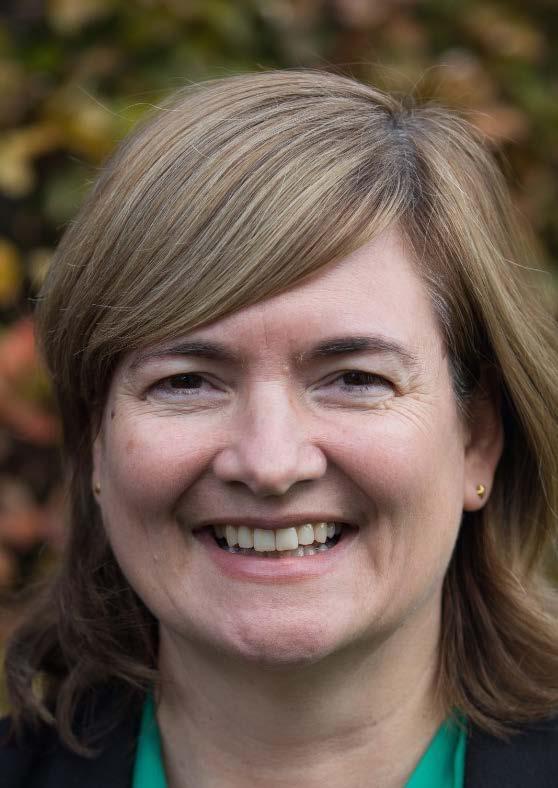
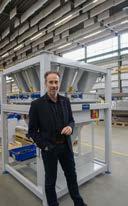
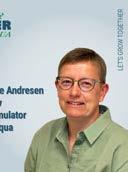

Van Aarsen appoints new Sales Director
Van Aarsen International appoints Harold Schroijen as new Sales Director for their Van Aarsen Americas location in Brazil.
Van Aarsen is proud to announce that Harold Schroijen has assumed the role of Sales Director at Van Aarsen Americas, following his successful time in the position of Area Sales Manager at Van Aarsen International. With over 25 years of industry and Van Aarsen experience, Harold brings a wealth of knowledge and expertise to his new position.
In his previous role, Harold was dedicated to providing numerous customers with tailored solutions for equipment and complete projects in the animal and aqua feed, pet food, and biofuels industries. His collaborative approach and dedication to quality have played a key role in driving customer success and satisfaction.
As Sales Director, Harold will carry on and raise awareness of Van Aarsen’s tradition of providing innovative and customer-focused solutions to the industry. He’s eager to lead the team in supplying excellent service and support to customers across the Americas. Harold operates from a hybrid setup, bridging the Chapeco office and headquarters in the Netherlands, fostering smooth collaboration across international boundaries.
Please join us in congratulating Harold on his new role, and we look forward to his continued contributions to Van Aarsen.
Aller Aqua have announced the latest edition to their team with Maja Hunt Andresen as the new Lead Formulator, a pivotal role that will drive Aller Aquas commitment to innovation and scientific rigor.
In this newly established position, Maja will spearhead the creation of product formulations for the factories. Her work will involve close collaborating with the sourcing, quality and production teams across all factory locations, ensuring that the high standards are consistently met and surpassed.
Maja brings a wealth of expertise to Aller Aqua. She holds a Master of Science degree in agronomy and has accumulated valuable experience at prominent companies such as Vilofoss Group, AgroVision, and most recently, as an Analytical Service Manager at Eurofins.
Aller Aqua says that Majas extensive background and dedication to excellence align perfectly with their mission to provide top-tier aquaculture feed and solutions and that they are confident that with her on board they will continue to push the boundaries of innovation and maintain our reputation for quality.
The company is excited about the strengthened capabilities Maja brings to their organisation and look forward to the advancements her expertise will contribute to their ongoing success.
Ignacio Onate joined Aquabyte as Senior Sales Manager in May. This new role was established to meet the rising demand and growth Aquabyte is experiencing in the crucial Chilean market.
“We are seeing a growing demand for our data-driven dish farming technology in the Chilean market. We are thrilled to welcome Ignacio Onate to our team, as his addition will further strengthen our local presence in one of the most vital regions for fish farming,” says Thomas Fekete Rønningen, Aquabyte’s Sales and Marketing Director.
With Ignacio Onate on board, Aquabyte’s resources in Chile include sales, customer insight and customer success. Ignacio and the rest of the Chilean team will report to Aquabyte’s headquarters in Bergen, Norway.
“I am excited to join Aquabyte, and I am confident that my previous experiences, including aquaculture, will enable me to effectively serve our existing Chilean customers and assist new clients in transitioning to digitally driven aquaculture. Aquabyte’s unique technology significantly impacts fish farming by enhancing welfare, sustainability and efficiency. I am eager to be a part of this journey,” says Ignacio Onate, the new Senior Sales Manager for Aquabyte in Chile.


Hatchery pack
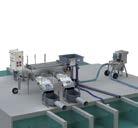
- Salmonids up to 1,5 kg
- Sea bass & bream up to 800 g
- Up to 2 - 4 tons / hour
Harvesting pack
Serie 10 (2,5’’)
Serie 40 (8’’)

Serie 50 (10’’)
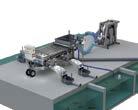
- Salmonids up to 40 g
- Sea bass & bream up to 25 g
- Up to 1 ton / hour
Grow out pack
Serie 30 (6’’)

- Salmonids up to 3,5 kg
- Sea bass & bream up to 1,5 kg
- Up to 3 - 4 tons / hour
FAIVRE offers a complete range of grading packs for fish farms with sizes in between 1 g and 3.5 kg. From Hatchery to Harvesting, Faivre products answer all your needs.
Guarantees compatibility between all your equipment, Counters and fish pump adapted to the size and speed of the grader, Connecting elements included, Power is centralised on a single control box.
All packs are given as an example and can be modified according to your needs
FAIVRE Group
7 Rue de l’Industrie
25110 Baume Les Dames France
